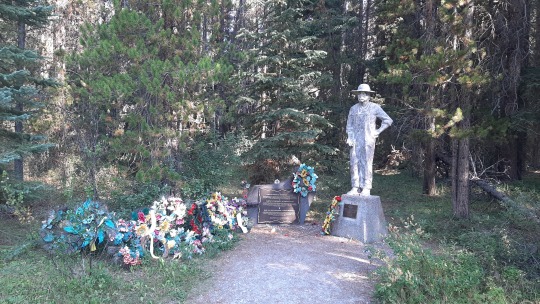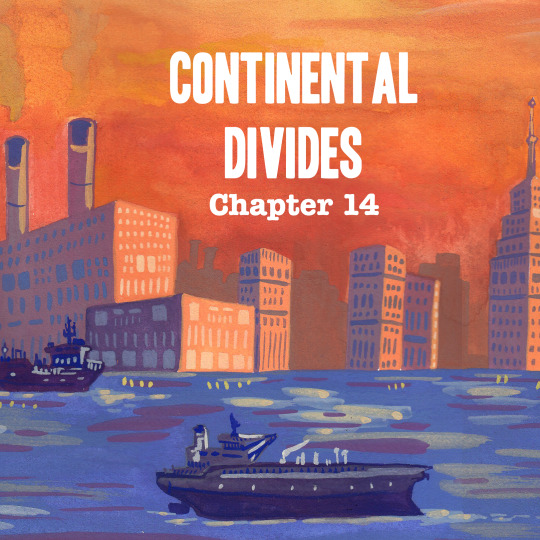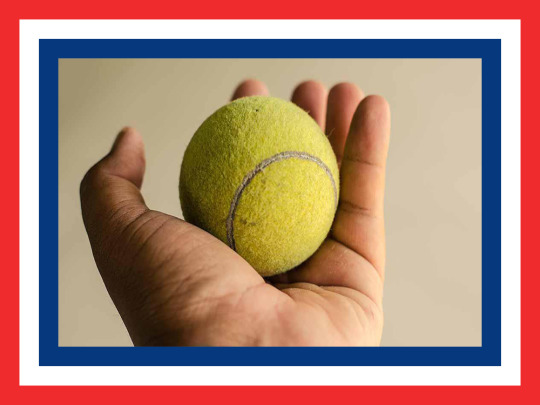#on opposites side of a continental divide
Text


REMEMBER FORT GRISWOLD!!
This was a rallying cry during the Battle of Yorktown, the final struggle of the American Revolution. What is Fort Griswold? What horrors happened on September 6th, 1781 to earn the respect of the troops? It is also personal to my family, as my wife has a direct ancestral family connection to this conflict.
Let's examine the events leading up to the Battle of Fort Griswold, also known as the Battle of Groton Heights. After turning coat, Benedict Arnold received a commission as a brigadier general in the British army as part of the deal that he made in order to betray his country.
In August 1781, George Washington decided to shift forces in order to attack the army of Lt. Gen. Lord Charles Cornwallis in Virginia. Washington began pulling troops from the New York area. Lt. Gen. Sir Henry Clinton, the British commander-in-chief in America, realized on September 2 that Washington’s tactics had deceived him, leaving him unable to mobilize quickly enough to help Cornwallis. Further, there was still a significant force of Continentals facing him in front of New York, and Clinton did not feel that he could detach troops to reinforce Cornwallis as a result.
Instead, Clinton decided to launch a raid into Connecticut in the hope of forcing Washington to respond. Clinton intended that this be a raid, but he also recognized that New London on the Thames River could be used as a permanent base of operations into the interior of New England. Clinton appointed Arnold to command the raid because he was from Connecticut and knew the terrain.
Arnold commanded about 1,700 British solders, divided into two battalions. Lt. Col. Edmund Eyre commanded a battalion consisting of the 40th and 54th Regiments of Foot and Cortland Skinner’s New Jersey Volunteers, a Loyalist unit. Arnold himself commanded the other battalion, made up of the 38th Regiment of Foot and various Loyalist units, including the Loyal American Regiment and Arnold’s American Legion. Arnold also had about 100 Hessian Jägers, and three six-pound guns. This was a formidable force anchored by the three Regular regiments.
Arnold and his command sailed from New York City on September 4. The British fleet anchored about 30 miles west of New London to make its final preparations, and then sailed for New London late on September 5, hoping to make a nighttime landing. Fortunately for the defenders of New London, the winds did not favor Arnold’s plan, and the British force did not arrive until daylight on September 6.
Rufus Avery, a Continental officer stationed at Fort Griswold, on the opposite side of the Thames River, and positioned on commanding high ground, witnessed the arrival of the British:
“… about three o’clock in the morning, as soon as I had daylight so as to see the fleet, it appeared a short distance below the lighthouse. The fleet consisted of thirty-two vessels…. I immediately sent word to Captain William Latham, who commanded [Fort Griswold], and who was not far distant. He very soon came to the fort, and saw the enemy’s fleet, and immediately sent a notice to Col. William Ledyard, who was commander of the harbor, Fort Griswold, and Fort Trumbull.”
43-year-old Lt. Col. William Ledyard commanded Forts Griswold and Trumbull. Ledyard, a Connecticut militia officer, quickly sent a messenger to notify Gov. Jonathan Trumbull and to muster troops. He then went to Fort Griswold to assume command of its defenses. The fort’s guns fired twice to signal the enemy approach, and a British ship answered with a third shot, changing the meaning of the signal to suggest the arrival of a victorious friend, thereby confusing the local militia commanders and delaying the mustering and deployment of their troops.
Fort Griswold began being constructed in late 1775 in response to the outbreak of hostilities. It was completed in 1778, and was known as “Groton Fort.” It sits atop a high hill and could bombard any ship attempting to enter the Thames River or the town of New London. Approximately 165 Connecticut militiamen manned its defenses, organized into two companies, and a detachment of the 8th Regiment of Connecticut Militia. Ledyard and his soldiers faced a stern task—they were badly outnumbered by veteran British troops including Regulars of some of the best regiments in Clinton’s army.
A British officer described Fort Griswold’s defenses:
“The fort was an oblong square, with bastions at opposite angles, its longest side fronting the river in a north-west and southeast direction. Its walls were of stone,and were ten or twelve feet high on the lower side, and surrounded by a ditch. On the wall were pickets, projecting over twelve feet; above this was a parapet with embrasures, and within a platform for cannon, and a step to mount upon, to shoot over the parapet with small arms. In the south-west bastion was a flag-staff, and in the side near the opposite angle, was the gate, in front of which was a triangular
breast-work to protect the gate; and to the right of this was a redoubt, with a three-pounder in it, which was about 120 yards from the gate. Between the fort and the river was another battery, with a covered way, but which could not be used in this attack, as the enemy appeared in a different quarter today.”
Six-pound cannons bristled from the western side of the fort, overlooking the Thames. The northern side by the main entrance was level and played a major role in the coming battle.
At sunrise on September 6, British troops landed on both sides of the mouth of the Thames River. Arnold’s battalion of 800 men occupied New London with no resistance. The 23 soldiers manning Fort Trumbull on the New London side of the river fired a single volley, spiked their guns, and then fled across the river to Fort Griswold. Shapley lost 7 men wounded while Arnold’s troops sustained four or five casualties. After chasing off the defenders of Fort Trumbull, Arnold’s troops entered the town and began destroying supplies and naval stores. Parts of the town were spared, but when a storehouse that contained a large supply of gunpowder was set ablaze, the resulting explosion triggered a huge fire that consumed 143 buildings in New London.
Lt. Col. Edmund Eyre’s battalion of 800 Regulars and Loyalists landed on the east bank of the Thames River, facing tangled woodlands and swamps. The New Jersey Loyalists, in fact, had so much difficulty moving the artillery that they did not participate in the assault on Fort Griswold.
Eyre sent a Captain Beckwith to the fort under a flag of truce to demand its surrender. Ledyard called a council of war and consulted with his officers. The Americans believed that a large force of militiamen would answer the call, and that this augmented force could defend the fort. Ledyard responded by sending an American flag to meet the British flag bearer. The American told Beckwith, “Colonel Ledyard will maintain the fort to its last extremity.” Displeased by the response, Eyre sent a second flag, threatening no quarter if the militia did not surrender. Ledyard gave the same response even though some of the Americans suggested that they should leave the fort and fight outside instead.
Arnold ordered Eyre to assault the fort, assuming that it would be taken easily. Once he reached a hill that allowed him to see the entire fort, Arnold realized that the stout fort would not fall easily. Arnold tried to recall Eyre, but it was too late. The British assault was about to begin in earnest.
Eyre split his force. Some moved to the southern side of the fort while others went around the east side to the northern face. A diversionary force feinted toward the western side. Naval captain Elias Halsey, an experienced artillerist, manned the main cannon on the eastern face of the front as Eyre’s troops approached Ledyard ordered his men to hold their fire until the first British detachment arrived at a point that gave his men the best opportunity to kill as many as possible. As the British moved to assault the fort, Halsey pulled the lanyard on his 18-pounder loaded with grapeshot. Twenty British solders fell to the ground, either dead or suffering from ghastly wounds from being torn apart by the grapeshot. Halsey’s well-aimed shot tore a gaping hole in the British line, but the well-disciplined Regulars closed ranks and filled that gap, continuing their advance.
Sgt. Stephen Hempstead of Ledyard’s command recounted, “When the answer to their demand had been returned … the enemy were soon in motion, and marched with great rapidity, in a solid column … they rushed furiously and simultaneously to the assault of the southwest bastion and the opposite sides.”
The large force of British soldiers moved on the southwest bastion under heavy fire from the fort’s defenders. The British officers goaded their men on toward the ramparts of the fort, even though their men were suffering heavily at the hands of the defenders. Colonel Eyre fell mortally wounded, and was carried from the field.
Maj. William Montgomery of the 40th Regiment of Foot was now the senior British officer. He led his men forward in solid column formation, and advanced on the east side of the fort. Montgomery ordered an attack on the eastern redoubt. Ledyard’s Nutmeg State men stoutly resisted, inflicting heavy losses on the British attackers. The Regulars attempted to scale the 12-foot high ramparts, but were cut down. As the men of the 40th Regiment poured over the top of the walls, defender Jordan Freeman, an African-American free man formerly owned by Colonel Ledyard, killed Montgomery with a long pike. The enraged Regulars then killed Freeman to avenge the death of their commander.
The concentrated fire of the British Regulars cut the fort’s main flag from its stand, which the British soldiers construed as the flag being struck in surrendering the fort. Thinking they had won the day, the rushed the main gate of the fort, only to receive a thunderous volley of shot and shell. The enraged Regulars tried to open the fort’s main gates to allow the rest of their comrades to enter, but a sheet of musket fire cut many of them down—supposedly, the first man to try to open the gate was killed instantly by a musket ball to the brain. Some of the British troops forced the gate open, and the Regulars poured into the fort.
Despite losing their two highest-ranking officers in the assault on the fort, the British carried the day. However, their successful assault now set the stage for the tragedy that followed.
With British soldiers pouring into the fort, Colonel Ledyard ordered a ceasefire and prepared to surrender Fort Griswold to the victorious British. However, the British disregarded the ceasefire and continued pouring fire into the American garrison, killing or wounding nearly all of the fort’s defenders. “I believe there was not less than five or six hundred men of the enemy on the parade in the fort,” claimed American soldier Rufus Avery. “They killed and wounded nearly every man in the fort as quick as they could.”
Maj. Stephen Bromfield, the ranking British officer after Montgomery fell, called out, “Who commands this fort?” Ledyard stepped forward and responded, “I did, sir, but you do now.” Another American, Jonathan Rathbun, watched Bromfield run Ledyard through the heart and lungs with Ledyard’s own sword:
“…the wretch who murdered him [Ledyard], exclaimed, as he came near, “Who commands this fort?” Ledyard handsomely replied, “I did, but you do now,” at the same moment handing him his sword, which the unfeeling villain buried in his breast! Oh, the
hellish spite and madness of a man that will murder a reasonable and noble-hearted officer, in the act of submitting and surrendering!”
Another African-American soldier, Lambo Latham, avenged Ledyard’s death by killing the British officer responsible for Ledyard’s death.
Ledyard fell, and those nearest to him tried to support the dying colonel. Capt. Peter Richards, seriously wounded, but still on his feet, held Ledyard while others moved forward to try to avenge their fallen commander. The British cut them all down with their bayonets, with some receiving as many as 30 stab wounds.
In the meantime, on the southwest side of the fort, some of the Regulars turned one of the fort’s cannons on its defenders and opened fire, killing Capt. Adam Sharpley and another officer.
“Never was a scene of more brutal wanton carnage witnessed than now took place,” recalled American Stephen Hempstead. “The enemy were still firing upon us… [until] they discovered they were in danger of being blown up.” Rufus Avery believed that the attack was called off due to the chance that further musket fire might set off the fort’s powder magazine.” Hempstead noted, “After the massacre, they plundered us of everything we had, and left us literally naked.”
Horrified by the carnage around him, a British officer demanded that the butchery end. “Stop! Stop!” yelled the officer. “In the name of heaven I say stop! My soul cannot bear it!” The officers soon regained control of their men, and the slaughter soon ended.
The best explanation for the massacre of the fort’s defenders by the British was an angry reaction to the casualties taken by them after the fort’s colors were shot down, leading the British to believe that the fort had surrendered. Furious at the continued resistance after the supposed surrender, the British punished the American defenders in an atrocity.
They killed and wounded every man they possibly could… one mad looking fellow put his bayonet to my side, swearing “by Jesus he would skipper me!” I looked him earnestly in the face and eyes, and begged him to have mercy… he put his bayonet three times into me… I think no scene ever exceeded this for continued and barbarous massacre after surrender. (Rufus Avery’s account of the storming of Fort Griswold by British regulars, September 6th 1781).
American casualties were appalling: 85 killed, 35 wounded and paroled, 28 taken prisoner, 13 escaped, 1 captured and released (12 year old William Latham, Jr.). Total: 162. British losses numbered 48 killed and 145 wounded.
An American named F. M. Calkins reported that American dead were loaded into a cart and were carried away from the fort:
“About twenty soldiers wee then employed to drag this wagon down the hill, to a safe distance from the expected explosion. From the brow of the ridge on which the fort stood, to the brink of the river, was a rapid descent of one hundred rods, uninterrupted
except by the roughens of the surface, and by scattered rocks, brushes, and stumps of
trees. The weight of the wagon after it had begun to move, pressing heavily upon the soldiers, they let go their hold, and darting aside, left it to its own impetus. On it went, with accelerated velocity, surmounting every impediment, till near the foot of the hill,
when it came against the trunk of a large apple-tree, with a force that caused it to recoil and sway round. This arrested its course, but gave a sudden access of torture to the sufferers. The violence of the shock is said to have caused instant death to some of them;
others fainted, and two or three were thrown out to the ground. The enemy, after a time, gathered up the bleeding men, and carried them into a house near by, belonging to Ensign Avery, who was himself one of the party in the wagon. The house had been previously set on fire, but they extinguished the flames, and left the wounded men there on parole, taking as hostage for them, Ebenezer Ledyard, brother of the commander of the fort.”
The British lit a trail of gunpowder that they hoped would destroy Fort Griswold’s magazine, but a daring militiaman entered the fort and extinguished the fire, leaving the fort intact. The British then loaded their prisoners onto their ships and withdrew, leaving chaos in their aftermath.
This was the final major battle in the northern theater of the American Revolution. General Clinton praised Arnold’s “spirited conduct”, but also complained about the high casualty rate suffered by Arnold’s forces—about a quarter of the troops sent to attack Fort Griswold became casualties. A British observer likened the fight for Fort Griswold to the debacle at Bunker Hill. Many British soldiers blamed Arnold for the losses at Fort Griswold, even though he was not present on the battlefield. Arnold next proposed a raid on Philadelphia, but Cornwallis’ surrender at Yorktown the next month ended the active fighting of the American Revolution.
Today, Fort Griswold is a Connecticut state park. The fort’s earthen works are well maintained. There are monuments to both Montgomery and Ledyard within the boundaries of the fort. The site of the former barracks located in the fort is marked. Large gates bear the names of all of the American defenders who fell defending Fort Griswold. The Groton Monument, erected in 1830, towers 130 feet over the battlefield in commemoration of the fort’s gallant defenders, and a plaque affixed to the monument provides:
THIS MONUMENT WAS ERECTED UNDER THE PATRONAGE OF THE STATE OF CONNECTICUT, A.D. 1830, AND IN THE 55TH YEAR OF THE INDEPENDENCE OF THE U.S.A. IN MEMORY OF THE BRAVE PATRIOTS, WHO FELL IN THE MASSACRE AT FORT GRISWOLD, NEAR THIS SPOT, ON THE 6TH OF SEPT. A.D. 1781, WHEN THE BRITISH, UNDER THE COMMAND OF THE TRAITOR, BENEDICT ARNOLD, BURNT THE TOWNS OF NEW LONDON AND GROTON, AND SPREAD DESOLATION AND WOE THROUGHOUT THIS REGION.
There is a small museum nearby that includes artifacts and a detailed diorama and model of the British assault on Fort Griswold. It is well worth the visit. One can also hike up the spiral staircase of the 130 foot obelisk to view the fort and battlefield through the small windows at its pinnacle. (I did this in the hot and humid summer and was very thankful to be back on the ground).
The Battle of Groton Heights is largely overlooked and forgotten today but was nevertheless an important battle, representing the final significant combat in the northern theater of the Revolutionary War. It also represents the only battle where Benedict Arnold faced his fellow countrymen.
The militia were farmers and fishermen that left their homes to defend their new country to become patriots. I was honored and humbled to visit this historical site in 2016. It is a great reminder of the ultimate sacrifices made to attain our freedoms.
REMEMBER FORT GRISWOLD!!
19 notes
·
View notes
Text
Awaiting the purifying Armageddon

The global turbulence that is shaking the international scene is simply the consequence of the bitter struggle between Washington, which is seeking to maintain its domination, and the Russian, Chinese, Persian and Muslim civilizations, the most powerful demographically, which want to free themselves from Anglo-Judeo-Saxon tutelage. These tensions will continue to escalate until one side or the other has overcome the other. In other words, either the current process of global restructuring will succeed and the Western oligarchy will have secured the enslavement of the entire planet to its sole interests, or the remaining free peoples will have been able to free themselves from the deadly grip of the New World Order. Obviously, the outcome will be a great purifying bloodbath.
The fundamental conflict between the Old and New Worlds
This fundamental conflict, which has its roots in the end of the Old Regime powers at the beginning of the 20th century, has entered an open phase since the start of Russia's special military operation in Ukraine, the only possible response to the ongoing stranglehold of NATO strategists. Since then, the conflict has spread geographically, encompassing a growing number of regions. At its heart lies a profound divergence of opinion between the West, represented largely by the United States, and non-Western states that share the ideals of multipolarity and a traditional moral vision of the world.
The Globalist Agenda versus Multipolarity
The West, under the influence of Washington and its allies, promotes a globalist agenda that favors economic globalization and total control of populations under the totalitarian direction of undemocratically elected international institutions. However, this agenda is increasingly being challenged by non-Western global players. These nations have realized that the New World Order favors only Anglo-Jewish interests.
Western economic interventionism and the promotion of inverted values in terms of family, sexuality and political structures are rejected by three-quarters of humanity still capable of expressing an opinion.
Resistance and Multipolarity
Russia, China, India, the Muslim world and revolutionary nations have united to resolutely oppose the destructive ambitions of the economic elite ruling the West. They are challenging the cultural, political and economic hegemony of the West, which is subservient to Anglo-Judeo-Masonic interests. This trend is particularly evident in Syria, where Russia has played a crucial role in resolving the conflict.
Even the United States' closest allies are reassessing their ties, aware of the former superpower's increasingly blatant indifference to guaranteeing their security. The recent escalation in the Israeli-Palestinian region, unprecedented in the 21st century, has amply demonstrated Israel's ascendancy within the "Judeo-Christian" whole.
The need for an eschatological reading of our times
The intensification of the confrontation between the Anglo-Judeo-Saxon principle of "divide and conquer" and the continental principle of union, coupled with the opposition between inverted moral values (wokism, gender theories, nihilism, Satanism, money, etc.) and the traditional values of family, homeland and sacrifice that still prevail in the BRICS, forces the analyst to consider the eschatological dimension of this confrontation. This final confrontation, which is fast approaching, probably as early as this summer of 2024, was foretold millennia ago, and regularly recalled in the most precise detail by numerous seers. All have predicted that this final conflict will have an apocalyptic dimension. The means that technology brings to modern warfare (nuclear, bacteriological, manipulation of crowds via social networks) confirm the darkest predictions: we're going to experience one of the greatest massacres that mankind has ever known since the Great Flood. And it will be a purification.
0 notes
Text
Alberta Rockies (2): Lake Louise and Johnston Canyon
I was up early to arrive at the shuttle bus by 8.30am, as nowadays the best way to visit Lake Louise and the only way for Moraine Lake is by shuttle bus, for which I managed to score a ticket while I was in Calgary - at the time the 8-9 timeslot seemed early but with the warm weather it was perfect as it meant I would do most of the hiking while it was still relatively cool. When I asked the ranger whether I should be concerned about bears while walking alone, he laughed and responded that I wouldn't be really walking alone 😜.
Back in 2010 we had already hiked up to the Agnes tea house and its famous side viewpoint of the lake, so now I opted for the Plain of Six Glaciers trail, which at 15.2km return is a long one but was relatively easy in terms of gradual elevation gain apart from the very last scramble up the rock pile. It first follows the lakeshore and then the river until you walk beside the end part of the glacier which is unrecognizable due to all the soil and boulders on top of it but has some blue ice shimmering through. At the very end, you can peek behind one of the mountains into the valley where one of the glaciers comes down. Blue sky and less people once away from the lakeshore, so it was absolutely gorgeous!! ☀️😍 From time to time there would be a loud rumbling when ice broke off but I was ofcourse always too late to see it. Down the steep slopes there were lots of waterfalls carrying meltwater... a really great experience! 🤗





On the way down, I sat for a while in the shade at the cute tea house sipping a rooibos tea after which it was a hot descent back to the lake. To cool down I plunged my head in the water which was deliciously refreshing but in the evening my hair felt like rope from the "rock flour". 😅 Before leaving I couldn't help but take one more picture of perfect Lake Louise! ❤




The interconnection shuttle went smooth so was half an hour later at Moraine Lake where it was insanely busy at the lakehead, however it got calm really quickly further along the shore... amazing how few people don't bother with walking another 1k to escape the crowds!? The mountains are called the Seven Sisters (having 7 peaks) but due to the afternoon sun and the angles from the shore I only managed to capture 5 at a time 🙃. Tip for anyone visiting; pics are best at Moraine in the morning and at Louise in the afternoon (so opposite of what I did). Instead of going out for dinner as I originally planned, I scrambled whatever edible I had left and just chilled at the campsite with my feet up! 😀



In the morning, I still wanted to visit the Johnston Canyon so defying my own expectations, I had already fully packed up and hit the trail by 7.30am! Downside; no sun, but upside; no people! 🤩 Listening to the brute force of a waterfall is I can tell you the perfect way to wake up! ☺





On the drive north on the Bow Valley Parkway there were some more pretty viewpoints as well as a memorial to a First World War interment camp. Canadians or immigrants with Austrian-Hungarian ancestry were deemed "enemy aliens" even if they had lived here for many years and were rounded up in internment camps, put to harsh work as in this location to build the national park's roads and even the Banff golfcourse. So much for condemning prisoner forced labour! 😵





Having a weakness for both viewpoints and wildlife, I spent the extra bucks to go up the Lake Louise ski chairlift which crosses above a wildlife corridor where you should have a good chance to see grizzly bears. The views were outstanding (you can see Lake Louise in the distance), but saw zip wildlife. Too bad but sitting on a chairlift in a t-shirt with binoculars is a fun change from shivering in the cold on a typical ski day ! 😉





After all the gorgeous nature at Banff & Lake Louise, I now went down the other side of the continental divide to Yoho National Park in British Columbia. BC, here I come!
Wildlife: 7 gophers at Lake Louise
SUPs: none
Hikes: two at Lake Louise, one at Moraine Lake, one at Johnston Canyon
1 note
·
View note
Text
Fendi Baggage On Sale
In addition, this bag additionally features inlay embroidery, uncommon leather-based and FF Logo on the 2018 Spring/Summer assortment. Two gold metal rings, together with the “Fis Fendi” emblem, are placed on all sides of the bag, with optional Strap You straps, mini Strap You straps and other Replica Fendi Bags. Replica Fendi Bags popularity “Mon Trésor” The bucket bag is flexible and full of capability, and has become the darling of the style business.
This style is a re-release of the first Fendi Baguette bag... Iconic medium Baguette bag made from beige canvas with a multicolour raised embroidery FF motif, trimmed in tone on tone leather-based. Gusseted bag made of material with a brown jacquard FF motif, adorned with an FF steel clasp.
The watches basic design is in accordance with most present style types. Women watches, which are well-known for their tartan examine sample, usually include this sample on the wrist band. wikipedia handbags On the opposite hand, the a quantity of leather straps are the most popular design in males watches, that are all the time elegant and authentic.
https://phoenet.tw/fendi-replica.html The Peekaboo has a stiff partition that divides the compartment into two, making a a lot wanted organized house that is good to companion with casual or corporate wear. Our Fendi replicas at AAA Handbags are available in numerous kinds, designs, and colours. There is something completely different and unique in every Fendi copy bag that ladies crave to have of their assortment.
There are cheaper replicas on the market, however there are no higher replicas obtainable anyplace. We are trusted due to our explicit attention to element and attentive buyer help, we focus on retail replica Chloe Handbags. Continental is a line from Fendi that features spacious leather wallets. Fendi’s Continental includes an enticing set of pockets that makes it a very handy pockets. The unique variant has a zipped pocket, two gusseted pockets, flat facet pockets, and 10 card slots – a extremely great part for a wallet. The Continental has a reproduction that's cheaper which is just out there at Lzw9999.
The digital camera bag has a removable strap that can be adjusted for crossbody put on or be carried by hand. Order this replica at DHgate.com and benefit from the charming design of Fendi inspired bag. Since they started, Fendi has its products featured on nearly each high finish fashion and luxury lifestyle magazines such as Vogue, Marie Claire, Elle and Cosmopolitan). Using meticulous craftsmanship and luxury material, this high end fashion producer is one of the best in delivering elegance to the market and being a standing symbol. Actually Fendi ,Bentley type are very similar.This yr, in China ,they're very fashionable .A lot of designers select this bed in high finish villa initiatives. Is the diamond-encrusted bag stunning and gorgeous?
Purchase one of these Fendi impressed bags and add them to your collection now, solely at DHgate.com. Fendi Peekaboo Fendi doesn’t fail to excite their loyal followers, and together with the strains they produce to give joy to designer bag enthusiasts is the Peekaboo handbags. The beautiful Peekaboo purse by Fendi isn't your typical handbag, because it has loads of room for necessities.
Only a woman knows the significance of a purse. It occupies a much more vital area within the wardrobe. Not solely does a purse enhance the whole look of the outfit and make it quite excellent, it's also essentially the most useful accompaniment. In the past few seasons, it has become a giant hit again. Replica Fendi Bag has also used FF Logo to make a lot of designs.
These watches are classic and easy, and the corporate has no intentions to vary this. Thus, Burberry watch designs are similar to a breath of recent air, as today’s designer watches are a bit exaggerated. Burberry watches are elegant but in addition trendy.
Embellished with dark blue leather-based and decorated... Iconic small Peekaboo bag made of soft nappa leather with a blue marbled print. Decorated with the iconic twist lock on either side. Iconic small Peekaboo bag made of soft nappa leather with a pink marbled print. The massive cousin Liu Wen is so easy as her personal, easy and chic yet delicate.
0 notes
Text
Fendi Luggage On Sale
The Peekaboo has a stiff partition that divides the compartment into two, making a a lot wanted organized space that is excellent to associate with informal or company put on. Our Fendi replicas at AAA Handbags come in varied types, designs, and colors. There is something totally different and unique in every Fendi copy bag that women crave to have in their collection.
Embellished with python leather-based FF clasp. Iconic medium Peekaboo ISeeU bag manufactured from beige leather-based on one side and pink leather on the opposite. Decorated with the long-lasting twist lock on both sides... Medium Peekaboo X-Tote bag made of darkish blue canvas with a tone on tone raised embroidery FF motif.
You can get the newest trend tendencies, styles and colours from designers like Fendi, complete with each element of the unique bag. The look and feel of the replica will be as near the actual thing as potential so that nobody will have the flexibility to tell the distinction. You can get the design that you've got got at all times wanted and spend tons of of dollars much less in the process. When you are wearing the perfect outfit for that special day or evening on the town you need to ensure you have simply the best equipment to go collectively with it.
Small Fendi First bag made of a smooth-textured cloth with blue marbled motif. Metal oversized F closure bound in blue suede. In fact, I assume Peekaboo is practical and never boring. Chiara Ferragni at all times uses a brand new era of FF Logo jackets, combine and match the earlier FF Logo objects, no sense of contradiction, but also very fashionable!
Fendi is an Italian brand of excessive fashion. Adele Casagrande opened her first leather-based and fur in 1918 and altered the name to Fendi when she married Edoardo Fendi in 1925. He has come a long way since then and is at present a multinational brand promoting luxurious items. In the early years Fendi has been supported by the wonderful work. Their products have demonstrated the capability and design. In 1965, Karl Lagerfeld and Fendi society is altering for the higher.
There are cheaper replicas in the marketplace, but there are no higher replicas obtainable anyplace. We are trusted because of our specific attention to detail and attentive buyer assist, we focus on retail replica Chloe Handbags. Continental is a line from Fendi that options spacious leather wallets. Fendi’s Continental consists of an enticing set of pockets that makes it a extremely handy pockets. The unique variant has a zipped pocket, two gusseted pockets, flat side pockets, and 10 card slots – a really nice element for a wallet. The Continental has a reproduction that's cheaper which is only obtainable at Lzw9999.
This model is crafted in Italy with brilliant pink leather and a particular branded perforated logo on the front. The coral-colored drawstrings convey out the chic bucket mouth, and the deep navy blue inside creates a contrasting effect. In addition to the handle of the purse, you could also replace the connected shoulder strap to free your hands. FENDI FLIP tote bag turned into a messenger bag Replica Fendi Handbags style turned. This versatile handbag transforms from a tote bag right into a folding messenger bag that can be transformed into a style and style according to day and night time. fendi replica belt aaa Soft leather creates a cushty texture, elegant and chic, and caters to the pattern of hot and delicate handbags.
Iconic small Peekaboo bag made of pink leather-based and embellished with the classic twist lock on each side. Featuring a suede lining with brown FF... Small Mon Tresor bucket bag made from beige canvas with a multicolour raised embroidery FF motif and trimmed in tone on tone leather.
It is cheaper, could be more ways than you get two as a substitute of 1 and a portfolio, maybe. wikipedia handbags A replica Fendi additionally goes a good distance, despite the change of seasons. If you've a mode that is timeless choose, no need to buy a model new one every season. Fendi’s inventive accent line “Bag Bugs” is the first to embody the idea of “fun fur”.
Karlito has turn out to be a new toy in the arms of many stars. Even the cool has been impressed by this “moem” and played a fun sport with it. The playfulness between the eyebrows and the sensation of Karlito’s cuteness! Fendi’s most generally recognized “double F” logo is from the hands.
0 notes
Photo

sleep well, stay warm
#IT'S SNOWING!!!!!!!!!#its also very cold#ive decided to be excited about the snow in place of the unfortunate everything else that happened today#also kicking all the tragic horror out my vague posting 'schedule' and replacing it with something Warmer#and a four three two one#an endless summer#on opposites side of a continental divide
47 notes
·
View notes
Note
Hey, sorry to ask this, but a few days ago I saw a post/discussion about the history of original work on ao3 (i.e. how and when it was allowed). I thought it was in my likes, but it's not, and I thought you had reblogged it recently, but I didn't find it. I was wondering if you have seen this discussion around? Or where I can find more about it? This specific post talked abt how who defended original work on ao3 were not the BNFs, if that helps.
That was me running my mouth in the reblogs of something or other. It’s just the one comment.
But what’s that you say? Some tl;dr about a pet topic? Don’t mind if I do! ;) (To be honest, most of this debate happened years ago, and a lot of the long meta was by me back then too, so…)
Okay, so, the situation with Original Works is actually super interesting and a microcosm of early years OTW wank.
This is going to be even more tl;dr than my usual. To try to summarize very briefly:
There were two big cultural factions. One thought “original” was the opposite of “fan”. That one was in charge of OTW. It was hard to get voices from the other side into the debate because they already felt excluded from OTW.
This divide broke down more or less into Ye Olde Slash Fandom on the “it’s the opposite” side and anime fandom on the “WTF?” side. Americans on one side and a lot of non-US, non-English language fandom on the other.
I. Media Fandom, Anime Fandom, and Early OTW
I went to that first fundraising party that astolat threw in New York City back in… god… 2007? 2008? I wasn’t on the Board or any official position until the committees got started later, but I was around right from the very beginning.
Whether you’re looking at volunteers or at people who commented on astolat’s original post, there were always a variety of fans from a variety of fannish backgrounds. People aren’t absolutely in one camp or another, and fannish interests change over time. If you go dig through Dreamwidth posts to find who was actually participating in this debate at the time, half of them are probably in the other camp now.
If you think like that sounds like a preamble to me making a bunch of offensively sweeping generalizations and divvying fans up into little groups, you’d be right! Haha.
I.a. Ye Olde Media Fandom
There are a lot of camps of people who like fanfic. One of the biggest divisions has been Ye Olde Media Fandom vs. anime fandom. Astolat’s social circle–my LJ social circle–was filled with people with decades of fannish experience and a deep knowledge of the Media Fandom side of things.
Those fandom history treatises that start with K/S zines in Star Trek fandom in the 70s and move on through the mainstream buddy cops like Starsky & Hutch to the more niche, sff buddy cops like Fraser and Ray or Jim and Blair are talking about Media Fandom. I try to always capitalize it because the name is lulzy and bizarre to me unless it’s a proper noun for a specific historical thing. It was coined as a rude term for “mass media” fandom aka dumb people who like, ughhhh, Star Trek, ughhh, instead of books. This is a very ancient slapfight from the type of fandom you find at Worldcon, often called “SF fandom” or plain “fandom”.
(Yes, this leads to mega confusion on the part of some old dudes when they find Fanlore and fail to understand that “fandom” there refers to what these people would call “Media Fandom”. They think only they get the unmarked form. But I digress…)
Media Fandom is a specific flavor of fandom. It’s where the slash zines were. It’s where the fans of live action US TV shows were. It’s the history that acafans have laid out well and that tends to get used to defend the idea of a female subculture writing transgressive and transformative fanfic. On the video side, Media Fandom is where Kandy Fong invented vidding by making Star Trek slideshows.
(Kandy’s still around, BTW. She’s usually at Escapade in L.A. Ask her to tell you about the dancing penises sketch in person. She’s hilarious.)
Astolat and friends had been going to slash cons for years. They founded Vividcon. And Yuletide. That meant that when astolat said “Hey kids, let’s put on a show!” we all jumped to help. This is a lady who gets things done.
From a Worldcon perspective, or even from an older Media Fandom perspective, this group was comparatively young, hip, and welcoming. Their fandom interests were comparatively broad. Just look at Yuletide!
In fact, yes, let us look at Yuletide… [ominous music]
I.b. Yuletide sucks at anime
From the very first year (2003), Yuletide mods have asked for help with anime fandoms, been confused about anime fandoms, or made bad judgment calls about anime fandoms. They’ve fucked up on Superhero comics and plenty of other things over the years, but anime has been the most consistent (well, and JRPGs, but there’s so much overlap in those fic fandoms).
There was already bad feeling about this. There were years of bad feeling about this.
I.c. Where are the historians?
Academic study of fanficcy things pretty much got started with Textual Poachers and Enterprising Women. Other acafans who are well known to LJ and later Tumblr are people like Francesca Coppa who wrote a very nice summary of the history of Media Fandom. These are not the only academics who exist, these academics themselves have written about many other things, and by now, OTW’s own journal has covered a lot of other territory, but to this day I see complaints on Tumblr that “acafans” only care about K/S and oldschool slash fandom.
There were years of bad feeling about this as well.
I.d. What kind of fan was I?
Now, by the time OTW got started, I’d moseyed over to not only a lot of live action US TV but a lot of old-as-fuck US TV that is squarely in the Media Fandom camp. But once upon a time, I was a weeaboo hanging out with my weeaboo friends in college. I learned Japanese (sort of). I moved to Japan. Livin’ the weeaboo dream!
More importantly, I used to be a member of a lot of anime mailing lists back in the Yahoo Groups days. I didn’t realize what a cultural gap that would cause until the original works issue came up on AO3.
I.e. Anime Fandom, German-language Fandom, Original M/M
Once upon a time–namely in that Yahoo Groups era–there was an archive called Boys in Chains. It was where you found The Good Stuff™. Heavy kink and power exchange galore! It was extremely well known in the parts of fandom I was in, even if you weren’t on the associated mailing list. It contained lots of fic, but it also had lots of original work.
Around that same era, I was on a critique list called Crimson Ink, which was mixed fic and original. The “original slash” and “original yaoi” crowds mixed freely and were in fanfic spaces. Remember, this is like 2003. You’re never going to get your gay fantasy novel published in English in the US. A couple of fangirl presses started around then, but they died an ignominious death after their first print run.
Fanfiction.net used to allow original work before it spun that off into FictionPress. We forget this today, but if you were an early FFN person, the separation wasn’t so great either.
Meanwhile, German-language fandom was hanging out on sites like Animexx.de, a big-ass fic archive that prominently mentions also including original work. I have the impression that Spanish-language fandom was similar too.
Shousetsu Bang*Bang was founded in 2005. It was a webzine for original m/m, but it was entirely populated by fanfic fandom types.
In all of those kinds of spaces, there was a lot of “original” work that was kind of slash or BL-ish and seen as fannish if it was posted in the fannish space. These weren’t anime-only spaces. They were multifandom spaces where it was seen as obvious and normal that a couple of huge fandoms like Harry Potter would dominate but that everything else big would naturally be anime.
While fans from every background are everywhere, I found that the concentration of EFL fans living in Continental Europe, South America, and Asia was much higher in this kind of space, even the exclusively English language part of it, than in my US TV fandoms.
II. AO3 Early Adopters
AO3 went into closed beta in 2009. In 2010, it was open to the general public (albeit with the invitation queue it still has). But not everyone was interested yet. Just like fandom is loath to leave the dying, shambling mess of Tumblr, fandom was loath to leave dwindling LJ/DW circles or was happy enough on Fanfiction.net. I used to see a lot of posts like “Why are you guys trying to STEAL fanfic from the original! FFN is enough!”
I literally could not give away the invitations I had. No one wanted them.
So who was on AO3? Obviously enough, it was all of us who built it and our friends. So that means a bunch of oldschool Livejournal slashers coming from fandoms like Due South or Stargate Atlantis.
The queue was open. Anyone could make an account. Everyone was welcome. In theory…
But more and more, there started to be these posts about how “AO3 Hates Anime Fandom” and “FFN is for anime. AO3 is for Western fandoms.” and “If you guys actually wanted anime fandom on there, you’d invite us better and make us more welcome.”
At the time, I found these posts obnoxious. People aren’t purely in one sort of fandom or the other. No one was stopping anime fandom from making accounts. No one was banning anime fandom. If there wasn’t much from old fandoms, that was because old fandoms seldom move.
Things began to change. Trolls on FFN forced the Twilight porn writers out, creating enough fuss and brouhaha to mobilize people who would rather have stayed put. AO3 got big enough that randos found it by accident. Original work started to pop up, posted by people who’d never looked at the rules and had no idea it was not allowed.
III. History of AO3’s Policy
I had argued for allowing “original work” during the initial discussions about the ToS. On one side of this issue was me. On the other, everyone else on the committee.
I was overruled.
Open Door started importing old archives to save them. Boys in Chains was hugely important to fandom history from my point of view. It was slated to be imported… maybe. Except that Boys in Chains is half original. AO3 was happy to grandfather in those stories, but the final archive owner felt, quite rightly, that it would be unfair to tell half of the authors they were welcome in the new space while spitting on the other half.
I was pissed. I had been pissed since being overruled the first time. To me, the fact that it should be allowed was so blatantly obvious that it was hard to even explain why.
(To be honest, this difficulty in explaining why and the even greater difficulty in figuring out the source of that difficulty is what held the discussion back for so long. When every assumption on either side is completely opposite, it’s hard to communicate.)
I felt betrayed. It would be like if you helped build something, and everyone was suddenly like “Well, obviously, we can’t allow m/m. It’s not normal fanfic.”
So we discussed it again and, again, it was me vs. literally everyone else. And still the “AO3 is only for Western slash fandom” bitching rose in volume and more and more people complained of feeling excluded from the new fandom hub. Finally, the committee agreed to open the issue up for public comment and get some more input. I was a fool and neither wrote nor proofread the post. It went out phrasing the question as allowing “non fannish” work or something of that sort.
I was furious. The entire point of the whole debate was that I saw some original work, the original work that belongs on AO3, as inherently fannish. And now this had been presented to the AO3 audience as something completely different. Think pieces were popping up in the journals of everyone I knew about diluting AO3’s mission and how we needed to save AO3 from encroachment. Public opinion was very negative. That’s both because of how the post was phrased and because OTW die hards at the time were mostly from the same fannish background. This tidal wave of negativity meant that there was virtually no chance of changing this poisonous rule. And if the rule didn’t change, the people who wanted the rule change were never going to show up to explain why it mattered.
If you’ve been reading my tumblr, I think you can guess what happened next.
I posted a long post to my Dreamwidth. It was a masterwork of passive aggression. In it, I wrung my hands about how simply tragic it would be if AO3 had to delete all of the original work… like anthropomorfic.
Now, I think anthropomorfic counts as fanfic as much as anything else, but I also knew that it fails most rigorous “based on a canon” type definitions of fic and, more importantly, it’s a favorite Yuletide fandom of many of the people on the side that wanted to ban original work.
That’s a nice fandom of yours. It would be a pity if something happened to it.
Yup. Passive aggressive blackmail. Go me. Suddenly, there was a lot of awkward backtracking and confused running in circles in various journals. The committee agreed to table the idea for a while but not rule out the idea of allowing original works in the future. We agreed to halt all deletions of original work. If a fan posted it, the Abuse Committee (which I was also head of at the time) would not delete that work even though it was technically against the rules.
Time passed. The people on the negative side got tired. I wanted off that committee and had wanted off for ages, but I was damned if I was going to leave before ramming through this piece of policy. Grudgematch till I die! (Look, I never said I wasn’t a wanker.)
After a while, some other fans came forward with more types of “original work” as evidence that it should be allowed. These were from parts of fandom none of us on the committee knew a damn thing about.
This new evidence combined with the gradual accretion of original stuff on AO3 without the sky falling eventually led us to quietly rule Original Work a valid fandom. There was never even a big announcement post. I slipped a word to the Boys in Chains mod myself.
IV. What Were They So Afraid Of Anyway?
So why were people so resistant? Seems like a dick move, right?
Not exactly.
I mean, I was enraged and waged a one-woman war to change the rules, but the other side wasn’t nuts. The objections were usually the following:
I just don’t get why it would be allowed. It never was in my fannish spaces.
Most of our members don’t want this.
Most of the examples of things that ought to be included are m/m. We are privileging m/m if we allow it, and AO3 already has a m/m-centric reputation that can feel exclusionary to some fans.
AO3 is a young, shaky platform that can barely handle the load and content we already have. If we open to original work, we’ll be opening the floodgates. The volume of posting will be so high, it will drown out the fic we’re actually here to protect.
Protecting stuff that doesn’t need protection because it’s not an IP issue would dilute OTW’s mission.
If we allow it, idiots will try to turn AO3 into advertising space, posting only the first chapter and a link to where you can pay to read the rest.
If we add another category of text before we add fan art, that’s a slap in the face of the fan artists we are already failing.
These arguments all make perfect sense in context.
Obvously, the issue with the first two is that different fannish communities have different norms. I knew that a very large community disagreed with the then current AO3 policy, but since so few of them were around to comment, it seemed like a tiny fringe minority.
The m/m thing is… complex. M/M content with zero IP issues is at risk. It is always at risk in a way that even f/f is not (though f/f is also always at risk). Asking for m/m to be exactly equivalent to f/f or m/f in numbers, tropes, whatever is ignoring the historical realities. In our current moment of queer activism in the West, we treat all types of queerness as part of one community with one set of goals, but once you get to culture and art or even more specific activism, this forced homogenization is neither useful nor healthy.
OTOH, AO3 really did have PR problems related to the perception that we gave m/m fandom the kid glove treatment. That objection wasn’t coming from nowhere.
AO3 was shaky. It was tiny when I first brought up this argument. Hell, it wasn’t even in closed beta the first time we discussed this. Part of what made the quiet rules change possible was AO3 organically getting much bigger and OTW having to buy many more servers for unrelated reasons.
The “floodgates” thing was put to rest by tacitly allowing original work before the rules change. We had a period to study how fans actually behaved, and as I predicted, only a small amount of original work got posted. It was indeed mostly things like original BL-ish stories or original work that had been part of a mixed original/fic fest, exchange, zine, etc. Currently, the “Original Work” fandom on AO3 only has 76,348 works. That’s pretty big compared to individual fandoms but tiny compared to AO3’s current size.
The commercial argument was spurious because commercial spam had been against the rules from the very beginning. OH THE IRONY that nowadays AO3 has all these idiots trying to post the first chapter of their fanfic and then direct you to where you can buy the rest.
AO3 has plenty of fanfic of public domain works. One of the problems with gatekeeping original work is that any way you try to distinguish it (not based on a specific canon, not an IP issue, etc.) will apply to some set of obviously allowable fandoms.
As for fan art… OTW has failed fan artists. They needed protection as much as or even more than fic writers. Just look at Tumblr! If we had succeeded at making DeviantArt but allowing boners, fan art fandom could have been safe all these years. Or when Tumblr inevitably shat the bed, we could have scooped up all those people instead of them scattering to twitter and god knows where.
OTW has failed vidders too, at least in terms of preservation. I know I’m not the only one who thinks this. Other major people from like the first Board and shit have discussed this with me offline. Doing some kind of vidding project, possibly outside of OTW is on a lot of our to-do lists. But at least one of OTW’s biggest victories has been that copyright exemption. OTW has demonstrably done really positive things for vidders that other organizations and sites have not. As a vidder, I never expected to see good hosting for the actual video files, and I’m quite content.
But fan artists… yeah. That argument makes sense at least from a place of frustration.
BTW, for the love of god, if you’re a n00b to OTW stuff, please do not reblog this post excitedly telling me that hosting fan art is on OTW’s road map, so yay, good news. Someone always does that, and it’s so irritating. I haven’t been involved in OTW in years, but I used to be, and I know what is on the roadmap. The couple of you who do heavy lifting on sysadmin and coding and policy things are welcome to weigh in as usual. I know none of us like that we can’t host fan art. It’s not what we intended.
Nonetheless, I found this argument to be the perfect being the enemy of the good. If we can save more text now without losing much of anything, we should do it. The fact that we’re fucking up on the fan art front is not a reason to spread the misery around.
V. Is “Original” the Opposite of “Fanfic”?
Okay, so that tl;dr above is why “BNFs” were on one side and “nobodies” were on the other. BNFs from one cultural background founded OTW. BNFs from the other cultural background weren’t even aware that the debate was going on.
But what was the underlying philosophical problem in even having the conversation?
It took me a long time, but I finally worked it out: We had two completely different ways of categorizing writing, and they were so baked into how we phrased questions that everything ended up being unanswerable to the other side. Here is what I came up with:
Schema 1
Fanfic - based on someone else’s IP
Original Work - the opposite
Schema 2
Non-Fannish Work - School essays, stories you are writing to try to sell to a mainstream publisher
Fannish Work Type 1 - based on other people’s characters directly (i.e. fanfic) Type 2 - based on tropes or whatever (“original slash” and the like)
Now, in the current moment when half of Tumblr just got into Chinese webnovels and the m/m ebook industry is thriving in English, original, tropey, BL-ish work is no longer different from “things I am trying to sell”. But this is how the divide was circa 2005 on fannish websites, and it’s the divide that was driving this internal OTW debate.
VI. Let’s Summarize the Camps One More Time
So, again, the debate makes perfect sense if you understand who was involved.
On the mainstream “But that’s not fanfic? I’m confused?” side:
Big US TV fandoms in English
Fandom historians of K/S–>buddy cop slash–>SGA, etc.
Americans
On the other side:
Anime fandom
“Original slash” fandom that had already been chased off of everywhere
People upset that AO3 wasn’t farther on translating the interface and supporting non-English language fandom.
People upset about US-centrism in fandom
Yes, I am very white, very American, and by now very into old buddy cop shows, but this was basically how the breakdown worked. It meant that something that looked like a minor quibble to one side was really, really not.
789 notes
·
View notes
Photo


Continental Divides
Summary:
“You could make a difference if you really wanted to.”
Natalie and Mark quickly find themselves on opposite sides of a deadly turf war, and more than their own lives are at stake.
Rating: language, alcohol & tobacco, implied (off-screen) sex, and violence. It’s also very much a story about politics and civil unrest. And felonies.
Chapter 14: Liquid Courage
“You should switch to water for a while, huh?”
“I’m fine. Great,” Natalie insisted, raising her voice over the music. “She’s the one with the problem, not me.”
Following Natalie’s jabbing finger, Shelly sighed. “Don’t worry about Scarlet, okay?” She pulled Natalie into a side-hug and steered the two of them away. “She’s just an insecure person, and Sinbad doesn’t make it easy for her to be chill when he—” Shelly came to a sudden stop, wobbling along with Natalie. “Never mind.”
Half-formed questions burbled and died in Natalie’s mind before she managed, “What does that have to do with me?”
“It doesn’t. Forget I said it.”
More secrets. Again. Natalie pulled free from Shelly’s grip, but drew up short as another thought came to her. “Is it about Max?”
Shelly’s eyes went wide. That was a yes.
Read on FFN or AO3.
5 notes
·
View notes
Text
(Spoilers Main) All Men Have a Role to Play: Master of Whisperers Part 1
First of all, I would like to thank Max L, @LuchiBelle, and Will Perpetuo Busch (here is a link to his webpage: https://scriptoriumm.com/). They have helped me modify an old (unreadable) essay into a much better one, gave me valuable input on the topic, help improve the grammar (I am not a native English speaker) and even edit some parts. If you like this go check their (much better) stuff.
Introduction:
The position of Master of Whisperers is one of the strangest on the King’s Small Council, with regard to the amount of time it has existed, The array of westerosi (and essosi) who have held it, and its institutional organization. Unlike other Small Council positions, it wasn’t created by Aegon “The Conqueror” to help him rule the realm and council him, but by his second son Maegor “The Cruel”. It had its unofficial founding when the people of the Red Keep and King’s Landing started to call Tyanna of the Tower the “Mistress of Whisperers'' (which has a double meaning; Mistress being simultaneously the feminine for Master and a synonym for lover, which Tyanna was before getting married to the King). It always maintained a semi-unofficial nature with many de facto holders of the position refusing to take the official title. But despite all these peculiarities, we can still see certain constants in the position.
The Masters of Whisperers, unlike other “Masters”, has no default bureaucracy; all their power comes from the webs of agents they build and is entirely personal. This is also made possible by the lack of supervision from the Hand or the King; having a lot of freedom to conspire against the crown if they want. Being in the Small Council appointed by the King they seem to be legally capable of whatever they want unless it goes against a direct order of the King, or it is treason. In other words, they can do whatever they want to do even if it is illegal with no reprisal from the King, at least until it is known when the King would have plausible deniability (this question was a source of debate in the Learned Hands Podcast in a great episode featuring u/JoeMagician)
The Holders of the Title and their Nature
“The King's Justice must be fearsome, the master of coin must be frugal, the Lord Commander of the Kingsguard must be valiant ... and the master of whisperers must be sly and obsequious and without scruple. A courageous informer would be as useless as a cowardly knight.”
-A Game of Throne, Eddard XV
Before starting to talk about the different Masters of Whisperers and considering most of them belong to the backstory of the series, I will leave you a link to another reddit post where I make a summary of all Master of Whisperers. If you already know the gallery of Varys’ predecessors, or simply aren’t interested in the specifics, I will recommend you skip that part.
The Masters of Whisperers are the smallest number of all of the King's councilors across the years since Aegon’s conquest (even counting unofficial ones), and the Masters of Whisperers also held their title for the shortest overall span of time compared to other positions. Counting only when they use the title it sums up to 47 years, and if you add Rego Draz alongside Bloodraven’s period as Hand it increases to 80 years.
In any case, it is an amazingly small number if we compare it to the 300 years that the Small Council has existed. This is probably because the Lords and Kings of Westeros consider espionage as unhonourable and cowardly, with the title being held most of the time by women, bastards, and foreigners with one great exception being Larys Strong (but due to his disability he is unfit to fulfill the traditional knightley roles of a Westerosi noble). Another reason might be that most Masters of Whisperers were very unpopular, so Kings might want to avoid the bad image having one would have given their predecessors. For example, Jahaerys no doubt wanted to distance himself from the rule of his uncle, while both Aegon V and Jahaerys II tried to avoid the appearance of being controlled by their Master of Whisperers like Aerys I. Most Masters of Whisperers served in moments of war or crisis (Rego Draz, for example, started to act like a spymaster after Elisa Farman stole the dragon eggs) and during reigns of especially paranoid Kings.
All of this shows how Larys Strong and Varys holding the title in relatively peaceful times with lazy Kings was exceptionally rare and unique. One major possible explanation for Varys remaining at his position for so much time is that he finds ways to remain useful. We know he pretended to be Cersei’s friend and he probably gave Jon Arryn useful information. Possibly the early Baratheon regime had not enough people to replace all positions, so they decided to keep him.
In Larys' case I think he was not named by King Viserys I himself, but by his Hand Ser Otto Hightower. Larys had probably started building a web of spies during his father's Handship, and Otto wanted to add him as an ally to his cause. We should also consider that the court was divided among different factions, and a civil war seemed imminent after the King's death. Adding him to the Small Council meant adding a great asset for Otto’s grandson's future struggle for the throne.
So, if the position is so unpopular, dangerous and rare, why have it in the first place? Why not simply use external spymasters that do not sit in the Small Council, as Kevan did with Qyburn and Rhaenyra with Lady Mysaria? But the advantages overshadow the inconvenience: it puts fear in your enemies and prevents plots against you (for example, Doran Martell being so afraid of Varys that he drives his daughter to rebel against him) and it also gives the Westerosi Lords a false sense of security. We can see how Cersei believes when she appoints Qyburn, who gains a lot of Varys’ former contacts, that the spies come with the position. It has been suggested that, like most things Cersei believes, this thought is BS, since Varys' little birds remained loyal to him.
Span of their Influence, Webs and Power
“How many eyes does Lord Bloodraven have? the riddle ran. A thousand eyes, and one.”
-The Mystery Knight.
Like I mentioned earlier this position is unique compared to every other one on the council, due to the lack of a formal bureaucracy behind it. It appears that the size of the Master’s webs and the amount of power they are able to accumulate are entirely dependent on their own personal ability.
This contrasts greatly with another position of the Small Council, the Master of Laws. Theoretically, the Master of Laws has such a vast number of responsibilities he should be third in the realm, only to the Hand and the King, but the truth is that most of them are unremarkable nobles with very little influence across the vast history of the continent. Meanwhile, we see how many Masters of Whisperers turn into very important figures in their respective regimes. Tyanna and Qyburn are good examples of those Masters who became the right hands of their monarchs. The same phenomenon also occurs with other members of the Small Council, like Littlefinger, who has a great web of spies. There may be even more cases, but as I mentioned earlier The Master of Whisperers is perceived as dishonourable, and most of them will prefer to keep the extent of their power and influence secret.
Regarding the size of their webs, they seem to remain pretty localized to King’s Landing and the Crownlands during most of recorded history. Tyanna was only able to extinguish the grand scale conspiracy of Aegon the Uncrowned rising against his Uncle King Maegor because she intercepted messages that had been sent to Alyssa Velaryon at the capital. Rego Draz does extend his web mainly into Essos because of the type of mission he is assigned with.
The first one to extend the web to a continental level is Brynden Rivers. He expanded the position using magic and his important status at court to gain information of distant regions. Maybe the scale of the web was overblown by the people fearful of his “eyes”, but this is equally useful because like I mentioned earlier creating this fear already made people less willing to plot against him.
It goes without saying that Bloodraven was the first Master of Whisperers to expand his influence in the regime and turn into the Hand of the King. He did not follow the usual image I mentioned earlier about the Masters of Whisperers. Being born at “the wrong side of the sheets” he is admittedly seen as lesser by the Westerosi Noblemen, similar to Larys Strong. But he is also very capable in some of the fields traditionally held by the nobility and not by the usual Masters of Whisperers, being a great fighter and commander. This combination of different abilities made him a capable Hand for years. His victory in the Second Blackfyre Rebellion before it even properly started is a great example of this.
There is also a lot of overlap between Master of Whisperers and torturers. For example, Tyanna oversaw the torture of Prince Viserys and Alys Harroway and Larys was also the Lord Confessor. He is the only other recorded case of a Master of Whisperers expanding to other positions while remaining officially at the original position, even if it is similar to the original one. He is also the first person to be named officially Master of Whisperers. Rego Draz would not count as occupying another position, because he made the opposite transition, he started as a very successful Master of Coin and only later did he use his contacts in Essos to do some information gathering.
Qyburn might have a similar process to the one Bloodraven had, with the only difference that he will achieve such power by being Cersei’s bootlicker. He has already absorbed many functions related to the Grand Maester and some seemingly opposite ones, like the royal torturer. This contrast between Grand Maester and Master of Whisperers can be seen in the attempt at a rivalry Pycelle wishes to have with Varys, with “The Spider” not even noticing him. The opposing duality of the two positions can be seen in how most Small Council meetings start with the Grand Maester bringing the official information brought by the ravens, while the Master of Whisperers brings the unofficial one brought by his “little birds”. Qyburn is just this phenomenon being brought forward in a more obvious way, with him using a Maester-like robe, but instead of being grey, it is white.
We can see that the influence of the Masters of Whisperers has varied over the years, but we can also notice how it has increased in recent times. With their webs being bigger and bigger and having more important roles at court.
Conclusion
Here ends the first part of this Essay. We have discussed the nature of the position and the span of its influence. There is an inherent contradiction in a position that exists in the center of westerosi nobility, but where outsiders can take control. A position for bastards, cripples, women, and foreigners, in which they can extend their webs of spies and influence to control history. Even though it is the most informal of all of the council members, or maybe because it is, many of the holders of the title have risen in their respective regimes to be highly influential political figures.
In the next part, I will be analyzing the loyalties of the Masters to each of their individual Kings and the Throne, and their overall use of magic. Both relevant topics to the ideas previously discussed.
2 notes
·
View notes
Text
April 12 - 15
We got out of Roswell fairly early and headed to White Sands National Park near Holloman Air Force base. We decided to see if they had a spot at the RV park on base. They did but we had to register with the public health officer on base to verify that we had gotten our COVID 19 shots. The Tech sergeant that worked with us was very helpful and we got the paperwork completed on the phone which he forwarded to the visitor center where we had to pick up our pass. We got to the base visitor center and it was a seamless process. It turns out we are both in the Air Force computer system. It’s scary that we are, but makes getting on Air Force bases much easier. Let’s see what happens in California! I'm good to get on base anytime with my ID card and Elizabeth has to get daily or a certain number of days Pass. The campground was very nice with very clean bathrooms and a free laundromat because they are planning an upgrade to larger machines, yea. We checked in and went back to the White Sands National Park to look around. It is an absolutely beautiful place. It’s the largest gypsum area in the world over 200000 acres (275 sq. miles). We took a one-mile walk that has descriptors of the wildlife and how they survive. The definitions and descriptions were very detailed and interesting how animal and insect life survives and thrives in a desert environment. It was difficult to walk certain parts but if you knew to get all the beaten track and walk on the hardpacked sand that the wind had blown flat, it was easier. It was pretty warm and of course dry but we hydrated before we left and had a relatively easy walk. The signs weren’t clear about which direction start so we ended up going backwards. I've always been a contrarian by nature and that didn't bother me at all. We met people coming in the opposite direction, just smiled and kept going. There was a different 600' boardwalk further on with easy walking with more descriptions of how the white sand developed. It turns out that there is moisture only 3' deep according to the signs. We kept driving into the park for a couple of miles until we came to the end of the pavement and turned around because the RV doesn't do well on washboard roads even though the sand was well compacted. We decided turn around and head back to camp. We had an uneventful evening with really good sleeping weather in the high forties to mid-fifties and dry, so dry. During our walk in the morning around the campground we bumped into a woman who had a German accent. I asked her where she was from and she said Illinois. I said where were you born. She said Berlin. We had a nice 30 minute conversation in German, mostl,y so I could practice my German. Marion is a very nice lady and we promised to give her some information about the windows in our house. She may want to upgrade her windows because it is so hard to clean them. That’s what we like about traveling, you meet some of the most interesting people.
April 14
Before we left the Air Force base in the morning and we went to buy some military T-shirts for Nunzio. We decided to go to the commissary to look around. Much to our surprise, we found real German bread from a bakery in El Paso. They had 2 of my favorites, farmers bread and Roggen brot (Rye bread). We snagged a loaf of each and now are trying to figure out how to preserve them for a couple of weeks. We were able to freeze most of the farmers bread and we will be eating ham and cheese on German bread for a couple of days for sure. The refrigerator is starting to get cleared out because we are using what we had there when we left home. On our way to Silver City, we saw something called Dripping Springs National Monument. We decided to take a side trip to look around and ended up taking a 1.5 mile hike up the mountain to see the Dripping Springs area. In the past there had been a hotel and Sanitorium there. It was a pretty strenuous hike but we made it along with couple of other crazy people to see water dripping out of a rock in some abandoned buildings. You will see the pictures below this narrative. We then headed towards Silver City knowing we wouldn’t get there until dinner time so we called ahead and booked two nights at an RV park near downtown. It is a very nice campground and we got a place right across from the bathhouse. We don’t always use full hookups because is too much trouble for 1 or 2 nights especially when we have to disconnect to go sightseeing.
April 15, 2021 we left the campground about 10 o’clock to drive the Cliff dwellings along the trail of the ancients byway. It took us an hour and a half to drive 45 miles because the road was very curvy and crossed the continental divide at 6900 feet. Along the way we ran into the couple we met in Albuquerque again for the third time and had a small chat as they were leaving the pictograph site. We asked if they were staying at the passport America campground and they were not. They ask if we thought the passport America pass was worth it. We said we paid for our annual fee in the first 4 camp sites. We agreed to sponsor them so they can get 6 more months on a regular subscription we will get 6 more months on our current stupid gin plus a $10 rebate. The walk up to the Cliff dwellings was fairly easy except for the 185 feet stairway section which was like climbing an 18 story building. We could not enter the Cliff dwellings, allegedly because of spring break which created spike in COVID 19 cases in New Mexico. I think it was a cop out to keep people out. The brochure says there are 42 rooms that YOU can walk through and investigate in normal times. Oh well, you have to adapt and adjust in this time frame. Before we started our trip to the cliff dwellings, we met a couple who had shipped RV over from Stuttgart to Argentina to start a world tour, probably more a South American in North American tour. They drove along the coast and west of South America all way up to Costa Rica until COVID hit. They were stuck for 5 months in Costa Rica. They shipped their RV to Florida’s east coast and began a journey around America before heading to Alaska via Canada, oops COVID. The RV can stay in America for a year, but they have to leave after 180 days. They cannot get a waiver and there is no other country they can go to for one day. Ironically, they got one of the lottery passes to the wave rock formation in Arizona last year. We know people who have been trying for 10 years to get a pass to walk up to the Wave formation in Arizona. When we get closer, we may try to win the lottery using the formula that they used by registering for Saturday Sunday and Monday where they had 3 lottery drawings. Hey only 1% of people get to go there and we’d like to be in that group. We drove down from the mountain and did the rest of the loop trail of the ancients past Lake Roberts where we stopped for coffee and back to our campground before cocktail hour. That’s all folks through April the 15th.
1 note
·
View note
Text
Apart from political considerations, the deliberate ignorance and chronic undermining of Anglophone philosophy might be accounted for in terms of parochialism. It is quite undisputable that there used to be, and to some extent there still is, something like a deeply rooted sense of national intellectual superiority in France, especially towards American philosophy and American culture at large. Accordingly, in his work on the early reception of pragmatism in France, Shook emphasizes the insulting claims issued by Jean Boudreau, a German philosophy scholar, against pragmatism in a 1909 paper where the latter was described as the exact opposite of “our national and secular traditions of pure and disinterested speculation.” Accordingly, pragmatism is depicted as a philosophical movement made by and bound for business men and plutocrats craving for material comfort and economic power, ready to justify whatever belief they need in order to achieve success and thus, “eventually importing imperialism even into philosophy”. This point would remain just a minor and trivial one if this kind of harsh and chauvinist attitude was something of the past.
The divide between analytical and continental (one may even say French) philosophy has almost reached the status of a founding myth in France. Anyone trying to trace its origin is necessarily led back to the allegedly traumatic episode of “Royaumont.” This refers to a large colloquium specifically devoted to “La Philosophie Analytique,” the purpose of which was to convene French and Belgian philosophers on the one side, and Anglo-American philosophers on the other, so they could debate together. Thus the list of speakers included W.V.O. Quine, Gilbert Ryle, P. F. Strawson, J. L. Austin, B. Williams, J. O. Urmson and R. M. Hare. The audience gathered the very young Charles Taylor, A. J. Ayer, and on the “continental” side, M. Merleau-Ponty, J. Wahl and H. L. Van Breda, founder of the Husserl-Archives in Leuven.
Unfortunately this noble endeavor led—or is supposed to have led—to the exact opposite effect to the one that was aimed at. The event took place in 1958 at Abbaye de Royaumont, and soon became famous as the “locus classicus” of the divide between analytic and continental philosophy.
Aude Bandini, “Sellars and Meillassoux, A Most Unlikely Encounter.”
3 notes
·
View notes
Text
Monica Puig (PUR) vs Angelique Kerber (GER): Women's Tennis Singles Final || A Sports Analysis

Tennis, original name lawn tennis, is a racket sport that can be played individually against a single opponent or two teams of two players. Each player uses a tennis racket strung with a cord to strike a hollow rubber ball covered with felt over or around a net and into the opponent's court. Points are awarded to a player or team whenever the opponent fails to return the ball within the court's prescribed dimensions correctly. Organized tennis is played according to rules sanctioned by the International Tennis Federation (ITF), the world governing body of the sport (Lorge, 2012).
Today's blog will focus on a single match, precisely the match between Monica Puig (PUR) V.S Angelique Kerber (GER) in Rio 2016 Olympics. This analysis will also consist of the court dimensions, equipment, basic skills, technical and tactical skills of each team, rules of the game, officials of the sport, and the overall game.
youtube
Court Dimensions
A tennis court is 78ft (23.77m) in length and 27ft (8.23m) in width, with the service line being 6.4m from the net. A singles court has a total playing area of 195.65m². The court is divided into two equal areas by a net suspended by a cord or metal cable attached to two net posts. The net is 1.07m high and is fully extended to fill the space between the two nets posts. The net is 0.914m high at the center, held down tightly by a white strap. A white band covers the cord or metal cable and the top of the net. For singles matches, the net posts' centers are 0.914m outside the singles court on each side.
The lines at the end of the court are baselines, and the lines at the sides of the court are sidelines. The baseline is up to 8m wide. Service lines are two lines between the singles sidelines, 6.40m from each side of the net, parallel with the net. On each side of the net, the area between the service line and the net is divided into two equal parts called the service courts. The line dividing the service courts is the center service line and is drawn parallel with the singles sidelines and halfway between them. The center service line is 4.11m wide.(Tennis Court Dimensions & Size, 2020).

Equipment

The picture consists of things such as a cap, headband, racket, water bottle, uniform or jersey, shoes, tennis balls, and the player’s bag.

There are also other equipment such as the umpire’s chair, net and post, and the player’s bench or seat for them to rest.
Basic Skills
Stance

The best stance for each shot is different and depends on many factors, including a player's position on the court, the grip, and the angle and pace of the ball coming towards the player. Four different stances are used in the game; these include the open, semi-open, neutral, and closed stances. Both players did the stance in their comfortable and advantageable way to get and return the ball. As you can see, where the player was about to serve, they have their stance to bend their upper body forward and make their leg straight to be ready to receive the ball. Also in the picture above, this is frequently the stance used by Kerber to return the ball.
Footwork

Good footwork is an essential skill in tennis. It enables you to reach the ball quicker and more efficiently, which allows you to play a greater variety of strokes. Although you're not traveling a far distance to the naked eye, tennis players rack up miles of walking and running throughout a match. Endurance is vital, but so is your footwork because there are tons of quick movements that you need to make in a short time and over a short distance.
Serving

The serve is the stroke that begins every single shot in a tennis match. While one player is serving, the other is receiving, and they take turns after the end of every game. Serves can take different shapes and forms, but they are generally characterized by a movement where the player swings the racket above his head while still standing behind the baseline. Besides, the player who got more aces was Kerber, especially in the second set.
Returning

A return is a shot where one player waits to see where the other player serves lands and then attempts to hit the ball back to the other side. A return can be executed in several different ways, with a forehand, backhand, slice, block, or chip. The most important aspect of a return is just getting the ball back to the other side, no matter how. Both players have executed this skill and tried to do their best in returning the ball.
Grip

A grip is a way of holding the racquet to hit shots during a match. The three most commonly used conventional grips are the Continental, the Eastern, and the Semi-Western. Most players change grips during a match depending on what shot they are hitting.
Ball Control

There are five primary controls of the ball: depth, height, direction, speed, and spin. Mastery of these controls is essential to mastery of tennis stroke production. Ball control is the secret of consistency in tennis. A player can keep the ball on the racket for a prolonged period of time during impact. It consists of accelerating the racket and accelerating at a precise moment. In the game, Puig showed how fearless and accurate she is in her shot in a different direction. It was genuinely fascinating to watch because it led to the other player trying to understand Puig's shots.
Technical and Tactical Skills of Each Team
PUIG: I can say that Puig is genuinely an admirable athlete. I was truly fascinated by her gameplay, especially how she mirrors the opponent's style at the first set and how she can manipulate the ball. In the first set, she tends to hit the ball near the court's line, making her make a lot of outside hits. However, as the game passed by, she was able to control more of the ball. The strategy that she had was to go near the net and smash or hit the ball to where the other player will have a hard time catching, meaning the other place where the opponent is located. Moreover, she was fearless and aggressive in playing the game. She hit where she will have an advantage, causing her to have more points and was very unexpected in her gameplay, specifically in 1:40:25. She also had the stamina to run around may it be the other side of the court or where her opponent is located. In addition, she is good in forehand and backhand. There was a part that I was totally in awe with her due to her backhand because I thought that she would use a lot of strength, but actually, it was the opposite, causing her opponent to had a hard time returning it. All in all, Puig really has her own technical and tactical skills that she used to gain more points.
KERBER: Based on what I heard, Kerber was having a non-vital shoulder injury and required treatment on her back injury between sets. As to why she was having a hard time catching with the ball and her stance mainly was to bend her two knees deep enough that one leg almost touches the floor. But despite all of that, Kerber was still able to play well, which makes me commend her. She is more on strength, causing her to have a lot of aces in the game. As the game passed by, she improved well, which is why she won the second set, and she was also able to adapt the tactics and techniques her opponent have used. She did a typical shot of Puig but not as good as her. However, what I like about her was that she was not yet ready to give up even though there was a huge gap in the last set, and it was seen that she was frustrated due to the changing of directions of Puig but still did her best in the end especially in the end part. There was a very long rally of deuce in the end, and it was really thrilling and entertaining to watch. All in all, Kerber showed an outstanding game to all the audience by using the different techniques and tactics she has.
Rules of the Game
The game starts with a coin toss to determine which player must serve first and which side they want to serve from.
The server must then serve each point from alternative sides on the base line. At no point must the server’s feet move in front of the baseline on the court prior to hitting their serve.
If the server fails to get their first serve in they may take advantage of a second serve. If they again fail to get their second serve in then a double fault will be called and the point lost.
If the server clips the net but the ball goes in the service area still then let is called and they get to take that serve again without penalty. If the ball hits the net and fails to go in the service area then out is called and they lose that serve.
The receiver may stand where they wish upon receipt of the serve. If the ball is struck without the serve bouncing then the server will receive the point.
Once a serve has been made the amount of shots between the players can be unlimited. The point is won by hitting the ball so the opponent fails to return it in the scoring areas.
Points are awarded in scores of 15, 30 and 40. 15 represent 1 point, 30 = 2 and 40 = 3. You need 4 points to win a game. If a game lands on 40-40 it’s known as deuce. From deuce a player needs to win 2 consecutive points to win the game. After winning one point from deuce they player is on advantage. If the player wins the next point they win the game, if they lose it goes back to deuce.
To win the set a player must win 6 games by 2 or more. The opening sets will go to a tie break if its ends up 6-6 where players play first to 7 points. The final set will not have a tie break and requires players to win by two games with no limits.
If a player touches the net, distracts his opponent or impedes in anyway then they automatically lose the point.
The ball can hit any part of the line for the point to be called in, outside the line and the ball is out.
The balls in a tennis match are changed for new balls every 6 games
A player loses a point if they fail to return the ball in either the correct areas on the court, hits the net and doesn’t go into opponent’s area or fails to return the ball before it bounces twice in their half.
Officiating the Sport
Chair Umpire

The Chair Umpire is much more than just the person who sits in a highchair and announces the score. They are the guardians of the Rules of Tennis and enforce them to ensure a match is played in a spirit of fair play. He/she is the final authority on all questions of fact during the game. Questions of fact include whether a ball was in, the calling of a service let, or the calling of a foot-fault. In matches where line umpires are also assigned, the chair umpire has the right to overrule if he or she is sure that an apparent mistake has been made.
Line Umpire

Line Umpire "calls all shots relating to the assigned lines.". They work on court as part of a team of between one and nine line umpires. Each line umpire is assigned to one line or, in the case of a short-handed crew, a system position. For example, a line umpire on the receiver's side may have to cover the center service line, then, following the service, move to one of the sidelines.
Ball Persons

There are usually six-ball persons on a court to look after this job – two at the back of each side of the court and two more at the net, covering each side. Their job is to ensure that the server always chooses tennis balls to choose from before they start to serve. They change the balls after every six tennis games and ensure that the players want for nothing. In the picture above, the other two ball persons are hidden and was not captured by the camera.
Tournament Referee
Not positioned courtside, the tournament referee is the person in charge of making all decisions regarding all the matches. They oversee the schedule of play and are the person assigning matches to specific courts. They make sure that all the ITF's regulations are enforced, including all involved conduct, and must be present whenever any matches are being played. They can overrule chair umpires, and in fact, their decision is final. They are present at the draws and are responsible for allocating the seeding. They are the person who has a say in whether a play is suspended on account of rain and must be available to resolve disputes regarding tennis rules.
Overall Game
All in all, the game was entertaining and fascinating. The players moved and hit the ball truly made me in awe and mesmerized by how they played well. Puig truly gained attention with her fearless and aggressive strategy of hers going near the net and still earning points on it. At the same time, Kerber showed her strength and determination to win the game despite her injury. Both of the players showed all the necessary skills to play tennis and their own kind of technical and tactical skills. However, we all know there is always a winner in a game, and Puig showed that she is the one right for that gold medal. Hence, Puig produced a devastating final set to beat Kerber 6-4 4-6 6-1 in the women's final and claim gold for Puerto Rico, their first in Olympic history.

References
3 Tennis Skills All Beginners Need to Master. (2020, January 27). Retrieved 17 3, 2021, from Tennis Camper: https://tenniscamper.com/3-tennis-skills-all-beginners-need-to-master%EF%BB%BF/
Basic rules of tennis. (n.d.). Retrieved March 17, 2021, from Active SG: https://www.myactivesg.com/Sports/Tennis/How-To-Play/Tennis-Rules/Basic-rules-of-tennis#:~:text=For%20a%20tennis%20player%20to,%E2%80%9D)%20to%20win%20the%20game.
Lorge, B. S. (2012, July 10). Tennis. Retrieved from Britannica: https://www.britannica.com/sports/tennis
Tennis Court Dimensions & Size. (2020, March 27). Retrieved March 17, 2021, from Harrod Sport: https://www.harrodsport.com/advice-and-guides/tennis-court-dimensions
Tenniswithalan. (2013, 26 August). Officials at a tennis match. Retrieved March 17, 2021, from Bounce Tennis Academy: https://bouncetennis.wordpress.com/2013/08/26/officials-at-a-tennis-match/#:~:text=The%20line%20umpires%20are%20the,court%20at%20any%20one%20time.
The 8 Basic Tennis Shots & Skills (Explained). (n.d.). Retrieved March 17, 2021, from My Tennis HQ: https://mytennishq.com/the-8-basic-tennis-shots-skills-explained/
1 note
·
View note
Text
'Same sport, different game' has long been the unofficial tagline of women's football. But as it continues to grow and in doing so moves closer in proximity to men's football it is inevitable that some distinctions between the two sides of the sport will begin to blur.
The question of how the women's game can ensure the preservation of its elements worth holding on to, whilst simultaneously needing to attract fans outside of its bubble, is one which it has been asking itself for some time now. There is no simple answer, as demonstrated when those with the task of balancing the scales openly admit they are not sure of the best approach to take.
For the sake of its prosperity the women's game must tap into an audience which is more accustomed to the starkly contrasting culture of men's football; something so established and ingrained it permeates through to the very society we live in as society itself filters the other way. The nearer the women's game is positioned to something so influential the more likely its norms will change as a result, but there is still opportunity to control to what degree its customs are altered. If managed correctly it should one day be possible to look back and see a positive evolution as opposed to the loss of better days. There is, however, little time to decide how the game intends to achieve the former if events of Manchester United vs Liverpool on Saturday afternoon are anything to go by.
Many things were said about Manchester United's vocal fan base in the days before they hosted Liverpool in Leigh. Many more things have been said in the aftermath.
The commentary during the opening minutes of the match was dominated with talk of the club's ‘Barmy Army’ fan group. It echoed the positive sentiments of a BBC article published the day before detailing the group's origin, their song book and growing attendances. A particularly audible chant during the eighth minute prompted the commentator to again commend the group and their efforts creating an atmosphere. He was seemingly completely unaware that they had in fact just finishing singing about the visiting fans being so poor they resort to eating rats.
The chant in question was that of Park Ji-sung; once a player for Manchester United's men's team. Seven years after departing the club his chant was sung at a women's team match, all due to its punchline about Scousers and poverty. It is, therefore, the perfect example of the two most likely things to be brought into the stands on the back of importing too much of a fan base from the men's game and too soon - those two being, things which are unrelated to the women's game and things which should not be present in either. Park Ji-sung's irrelevancy to a Women's Super League match is not negated just because the final line of the chant referenced the opposition, and the nature of that reference ought to mean the chant be considered unwelcome at any match at all. It is hard for Barmy Army members to justify singing this particular chant on them not yet having material more suited to the women's team when they pride themselves so much on the existence of their women's team centred song book.
The point that new fans won't initially know the inner workings of a women's football crowd is a valid one, however. It has to be expected that their contribution will likely be what they do know, which is men's football. Often perceived to be the default in any case. A common argument being made in reaction to events at Leigh this weekend by those on the outside looking in has been that if women's football wishes to be treated equally it must be prepared to have the same elements as the men's game - warts and all. Many comments read like they had been left by people resigned to accepting that abuse is part and parcel now and you can't have football without it. It is easy to understand why somebody would resign themselves to that when also in amongst the reaction were comments from others carrying the disturbing notion that the sort of chants from the Manchester United fans are not even warts but are in fact enhancing a match day experience. Mocking destitution and death (as referenced in their chant related to the Hillsborough Disaster) is not an enhancer of anything.
It is difficult to find fault in the principle behind the argument that women's football must adopt things from men's football, when it is an argument being made in the general sense. But when made in the context of fan base attitudes and behaviours, it does not in fact need to adopt what are warts. It is impossible to convince fans not to cross a line or to come back on the correct side of a line when they do not acknowledge the existence of one. It is critical therefore that the women’s game establish exactly where the line is as early as possible.
Preventing the adoption of the worst elements of men’s football will require a robust, zero tolerance approach with input from all sides. Including the existing fan base who must play a role and be prepared to police both themselves and new arrivals. It is likely not a coincidence that the one set of fans failing to read the room, or outright ignoring it, happen to also be the set with no grounding in women's football culture because their team is only just over a year old. Whilst it is not possible to force new match goers to adapt to the differences of a women's match, a club stands a much greater chance of their fan base growing into a positive asset if new match goers can at least enter a ground and see women's football culture on display. Recognising and then taking on board the differences will largely be an education achieved through good example.
It is a shame then that the FA spent so many years catering to children and families rather than to the young adult and adult demographic who have been responsible for setting the crowd tone to date, and so are therefore the subsection who would be most likely to successfully set that necessary example moving forward. Had more of this type of fan been targetted earlier and more assistance been given for the establishment of fan groups then perhaps there would be enough of a vocal presence at matches to offset the introduction of anybody wired to make distasteful contributions.
It would be a continued shame if that demographic were now overlooked for a second time in favour of bussing in 'ready made' fans from men's matches, when it is the case that had this demographic instead been the target audience they could by now have developed into exactly what those bussed in fans will be, but crucially minus the problematic tendencies. The ‘source from elsewhere’ approach may shortcut to higher attendances, but, just as targetting children now so there is a fan for tomorrow came at the expense of building up the fan of today, an influx of fans too contrasting with the present will come at the expense of having a desirable culture in the future.
The young adult and adult demographic who have been part of the league are also key to establishing rivalry. The more seasoned the fan and the older they are the more able they are to recount previous meetings between their team and another. One argument made for bringing in fans from outside of the bubble is that it is a step towards lively atmospheres with needle, but the fact that we so often highlight the times such an atmosphere is present proves the women's game does in fact already have the ability to create such thing - the issue is that it isn't created often enough. This is not because there is something wrong with the current fans and their methods, it is because there isn't yet enough narrative and history which are two things vital to cultivating a partisan crowd.
The Women's Super League is only nine years old. It has also been through multiple restructures and re-licencings at the same time clubs and squads have been becoming unrecognisable from one season to the next, meaning you can divide those nine years into three or four completely different and practically unrelated eras. Going back further than a season or two takes you into a time of little relevancy to what is happening on the pitch nowadays. It is an unfair and unrealistic expectation that fans regularly create an atmosphere to rival those seen in men's football when those men's football fans are often doing so with a lifetime of meaningful past meetings to reflect on.
Of the eight founding Women's Super League clubs, only one fixture between them could really be considered a local derby but for the first two years it did not feel like one. Only in 2013, once some of Everton's better players had 'crossed the park' to join Liverpool who had finally become competitive and the power started to swing to the red half of the city, did the Merseyside Derby have the fitting significance. Almost 1500 fans travelled to Widnes on a freezing cold March night despite inches of snow on the ground to watch a Continental Cup match. The atmosphere whenever they faced each other during that period was exactly what is required and requested. Two seasons after the derby found its feet Everton were then playing in the second division and little of the Liverpool team which leapfrogged them into being best in the city remained, causing the few meetings between the sides in the years since to not manage to spark anywhere near the same level of passion in a crowd.
If we are affording ourselves time to grow the size crowds then we must also afford the crowd time to develop an identity, practices, stories and traditions. Such things can not be manufactured or come as a byproduct of transferring fans from men's stadiums because context is what makes the occasion.
Much is said about women's football being reluctant to the culture of the game changing with the introduction of new approaches but the fans being accused of having this attitude are the same fans wishing others would join in with their singing and bemoaning when an attendance is down from the week before. They are ones doing the utmost to create an atmosphere. The are the ones most open to changes which would benefit that goal. Their perfectly reasonable hope that change come with the respected condition that lines not yet crossed remain uncrossed should not be confused with a reluctance to welcome new people. Because to confuse the two will leave the door open for new people to cross the line and justify doing so on it being unreasonable to ask that they don't.
81 notes
·
View notes
Photo

Truth, justice, or whatever
Is there such a thing as a self-respecting philosopher? Aristophanes, in The Clouds, made the philosopher into an object of derision: impractical, impoverished, devoid of common sense and emotional intelligence, and so obsessed with metaphysical esoterica as to be incapable even of self-care.
Against such formulations, how does the philosophical nerd stand up for himself? His prognosis seems to improve when we recall that his natural enemy is not the jock but the poet — not himself known for practicality. In Plato’s Republic, Socrates famously describes the “ancient quarrel between poetry and philosophy,” started of course by the poets, when they made fun of philosophers.
For those who can’t decide which side to take, there is the third way practiced by Nietzsche: to enter the battle on the side of the poets but as a philosopher. This is the spirit of Simon Critchley’s Tragedy, the Greeks, and Us. The book is not merely an account of ancient Greek tragic drama (and its relevance for us) but also an attempt to turn Plato’s famous critique of the poets back on itself: Philosophy must be corrected by “tragic consciousness.”
No one who has set foot in a philosophy classroom will be surprised by Critchley’s recital of what he calls “philosophy’s tragedy”: It overestimates the power of rational reflection to obtain knowledge of the world and ourselves. It establishes metaphysical and moral absolutes. And it overestimates our agency — our ability to act freely on the basis of reasoning about what is right and good. These anti-philosophical tropes have been in fashion since the beginning of philosophy and have reached their apotheosis in the fusion of critical theory and post-structuralism that now dominates the humanities and social sciences. In fact, they are increasingly influential in public discourse: Critchley himself is the moderator of the Stone, the New York Times's philosophy forum.
Will an analysis of tragedy add something further to such well-worn complaints? Critchley is particularly insistent on the idea that philosophy is devoted to a “non contradictory … psychic and political existence” that has no place for the feeling of grief. This describes the position of Plato, whose Republic attacks tragic poetry for encouraging audiences to identify with the spiritual conflict and sorrow of the poems’ protagonists. Such identifications, Plato warns, allow us to take pleasure in painful psychical states, which means that pain then overwhelms our rational capacities and no longer serves as the proper corrective to bad behavior. Instead, we are encouraged to indulge in our sorrow, mimic the psychological disorder of protagonists, and write off our own conflicts as part of a hopelessly irrational human condition.
One might attempt to defend tragedy by challenging Plato’s rather simplistic rendition of identification, in which the audience simply incorporates represented mental states whole cloth. We get the seeds of a more robust account in Aristotle’s Poetics. Particularly important here is the concept of catharsis, which suggests that tragedy can actually purge us of the emotional states it elicits instead of leaving us with their permanent detrimental effects.
Critchley does not like this sort of account, nor does he like various attempts to deepen it: Catharsis, in his view, is not purgation, nor is it purification, emotional recalibration, psychotherapy, or any sort of moral education that leads to greater “psychical integration” or “authenticity.” He has no argument against such understandings except to say that they come dangerously close to having something favorable to say about the possibility of human autonomy and self-knowledge. His preferred view, tragic consciousness (or “tragedy’s philosophy”), is concerned with the ways in which we are irredeemably compromised by fate, understood as any force (social, psychological, or divine) that exceeds our capacity for deliberation. Our agency and self-knowledge are never more than partial.
In Critchley’s view, a protagonist’s tragic flaw symbolizes human fallibility and finitude. The tragic hero is essentially conflicted, “at odds with himself, doubled over and divided.” So is the audience, and so is “the city of which the tragic hero is both the expression and symptom.” Tragedy forces us to recognize both our limited agency and the world’s incomprehensibility and moral ambiguity. “Tragedy’s philosophy” turns out to be “a bracing, skeptical realism” that stares down a world “entirely without the capacity for redemption.”
There’s much more to this account, including Critchley’s praise of Plato’s other well-known antagonists, sophistry and rhetoric. The last section of the book is devoted to Aristotle’s Poetics and rejects its focus on coherence and organic unity in favor of Euripides’s “tragedies of disintegration, disunity, and incoherence.”
Unfortunately, Critchley’s distaste for coherence is clear in the way his book is structured and written. It consists of 61 brief chapters of disjointed rambling that at times verge on mania, as if Holden Caulfield lost his mind after attending a graduate postmodernism seminar. It combines ham-fisted attempts at being accessible and relevant with all the pretentious tics of contemporary continental philosophy. Pop culture references abound, and an alarming number of sentences end with “or whatever” — as in “truth, justice, or whatever.” But if you need any reassurances about the author’s sophistication, you’ll be treated to many a “horizon,” “doxa,” “otherness,” and “lacuna.”
This is all to say that the book is full of the counterproductive effects that follow from a philosophical bad conscience — from Critchley’s attempt to disavow a simplistic conception of philosophy in order to ally himself with a simplistic conception of the poetic. In doing so, the book sacrifices both philosophical depth and literary sensibility.
What substance the book has it borrows from a handful of well-known secondary sources. It reports these sources faithfully but makes no attempt to analyze, synthesize, or otherwise critically engage with them. Meanwhile, it represents philosophy in general as a form of dogma — a straw man devoid of the nuance to which “tragic consciousness” is supposed to attune us. Contra Critchley, philosophy has always sought to grapple with its own fallibility. Socrates, after all, claimed to know nothing, and his willingness to die for it was tragic.
If you can’t be friends with philosophy, you ought to at least make friends with psychology. Whereas Critchley identifies “affect regulation” (or our ability to manage our emotions) with reason’s repression of emotion, depth psychologists think of it as the capacity to have emotions without being overwhelmed by them: One contains them. This in turn requires a capacity to represent feelings, to put them in thoughts and words, instead of disavowing them only to enact them tragically. And this capacity is thought to be a product of growing up, a process in which loss and mourning are essential. We give up the ministrations of our early caretakers only to internalize the ability to take care of ourselves.
The insight of the depth psychologists is that integration and disintegration, much less reason and emotion, do not form the binary opposition that Critchley thinks they do. The experience of loss may involve an integration of what is lost and forms the basis of the identification at work in an audience’s experience of the tragic. This sort of account is essential to deepening our understanding not just of catharsis but also of the aesthetic. If we can understand the relationship between external losses and internal gains, we are in a much better position to explain the pleasures of tragic consciousness and defend them against anti-poetic mania.
Tragedy, the Greeks, and Us, by Simon Critchley. Vintage, 336 pp., $16.95.
Daily inspiration. Discover more photos at http://justforbooks.tumblr.com
8 notes
·
View notes
Photo

going through all the stuff I posted to twitter but never remembered to cross post here because I....assumed.....at some point I would finish it........and then did not do that......
anyway, brutus as a bad omen in antony’s dreams is always a fun thing to play with
#and a four three two one#on opposites side of a continental divide#hmmm might remake their tag#blood cw#a time long gone#misc AU tag
24 notes
·
View notes
Text
Presidential Profile: James Monroe (1758-1831). 5th President of the United States.
Pre-Presidency (1758-1816):
- James Monroe was born on April 28, 1758 in Westmoreland County, Virginia.
- Monroe’s parents were Spence Monroe and Elizabeth Jones, he had 4 other siblings. His father was a modestly successful farmer and carpenter.
- His ancestry is Scottish, Welsh and French Huguenot, making him the first President to not be of English descent.
- Orphaned at age 16, he inherited his parent’s land and property and gradually under patronage from his maternal uncle who was a member of Virginia’s House of Burgesses, through here he first made connections with Thomas Jefferson and George Washington.
- He dropped out of college to take part in the American Revolution. Due to lack of literacy among enlisted men, Monroe was literate through his schooling became an officer. He along with regiments of fellow Virginians took part in Washington’s New Jersey Campaign, partaking in the Battle of Trenton against the British allied German Auxiliaries the Hessians. Monroe was seriously wounded with a gunshot to the shoulder that severed an artery, he was saved due to quick action by his fellow soldiers.
-Monroe’s service in the war continued off and on, he was present at Valley Forge and took part in the Battle of Monmouth. He was often sent back to Virginia to raise more troops but often suffered frustration through low recruitment. Eventually he was sent to Williamsburg, Virginia to study law under his friend and mentor, Thomas Jefferson. His interest in being a lawyer was said to be mostly motivated by its path to social connections for better social and political advancement rather than borne out a love of law itself.
- On February 16, 1786 he married New Yorker Elizabeth Kortwright, a member of a wealthy New York merchant family of Dutch and English background, her father had once been a British officer. They had three children, 2 daughters to survive into adulthood and one son who died in infancy.
- He sold his inherited plantation in 1783 and later purchased large plantations and real estate. Though he became wealthy, his plantations were not very profitable and financial losses compounded by some expensive French influenced tastes caused financial hardship. He often had to sell land and his own slaves from time to time just to break even.
- He became a member of the Virginia House of Delegates and later part of Virginia’s delegation to the Continental Congress, where befriended James Madison. Monroe here asserted his belief in the future Jeffersonian philosophy that became the basis for the future Democratic-Republican Party, or Anti-federalist philosophy as it was this known. He was a proponent of states rights and outspoken against the passing of the US Constitution though he was somewhat in favor of reforming the Articles of Confederation.
-His political career would see him serve as a US Senator from Virginia in the 1790′s then later becoming George Washington’s appointed Minister to France (US Ambassador). Monroe however was outraged by the Jay Treaty signed by Washington which established commerce with Great Britain. He was firmly anti-British at this point and in support of Thomas Jefferson and James Madison’s increasingly pro-French anti-Federalist sentiment. This put him in opposition to Alexander Hamilton’s Federalist stance. His time as Senator lead to investigations of financial misdeeds which linked to Hamilton, this eventually lead to the public disclosure of Hamilton’s extramarital affair but not his link to financial impropriety. Years later the two nearly arranged a duel but it was diffused by interesting future Vice President Aaron Burr who later killed Hamilton himself in a duel. 1799 saw him elected Governor of Virginia serving until 1802, a role he would briefly serve in again 1811.
- He helped support Thomas Jefferson’s candidacy for President in 1800, which Jefferson would win, defeating incumbent John Adams. Monroe was subsequently involved in negotiating the Lousiana Purchase with Napoleonic France and later made Minister to Great Britain in Jefferson’s administration. Monroe attended Napoleon’s coronation as Emperor of the French in 1804. Notably during his tenure as Minister to Britain he signed the Monroe-Pinkney Treaty which would have updated the Jay Treaty for another ten years, seeing the Jay Treaty as largely a success with lucrative trade and a lasting peace with Britain, Jefferson however refused to submit the treaty to the Senate for ratification. Relations with Britain soured leading to the eventual War of 1812.
- 1808 saw Monroe return to the US and consider running for President but Jefferson did not endorse him and he began to see this as a snub due to a preference for then Secretary of State James Madison. Monroe and Jefferson repaired their friendship after Madison was elected in 1808, while Monroe refused to speak to Madison for two years.
- He was again elected to Governor of Virginia in 1811 but only served four months before being offered the Secretary of State position. Madison did so for two reasons, he thought Monroe’s popularity with different factions within the Democratic-Republican party would be healed by Monroe’s personal appeal. Secondly, he had much diplomatic experience and was viewed as improvement over his predecessor, Robert Smith.
-As Secretary of State, his primary goal was to make treaties ensuring neutrality and peace with both Britain and France, who lead opposing coalitions in Europe during the Napoleonic Wars. However, ongoing British policy of impressment of US sailors into Royal Navy service eventually lead to a declaration of war by Congress and signed by President Madison in June 1812. Monroe came round to supporting the war effort which went badly for both sides. Madison removed his Secretary of War and couldn’t find a replacement, so it was offered to Monroe having had prior military experience. He resigned as Secretary of State but when no replacement could be found he kept both Secretary roles at once running the War and State Departments simultaneously becoming the only person in any Cabinet to hold two Cabinet positions at once. Monroe handled the last months of the war deftly, helping to improve financing for the war and the army in general. He also, helped order General Andrew Jackson to New Orleans where Jackson famously repelled a British invasion at the war’s conclusion. While the War of 1812 was officially a stalemate, Jackson’s victory gave the nation a new sense of patriotism and euphoria. It also effectively ended the Federalist party for its anti-war stance and the attempt at New England’s secession with the Hartford Convention which was unpopular with the Federalist stronghold of New England it’s merchants who traded with Great Britain.
Presidency (1817-1825):
-Monroe was the successor to Madison much as Madison had been to Jefferson, helping to establish the Secretary of State as the most crucial and sought after position in the Presidential Cabinet. He became the Democratic-Republican candidate in 1816 and along with running mate, Daniel Tompkins, Governor of New York became the 5th President and 6th Vice President of the United States respectively after defeating the Federalist candidate Rufus King. Monroe won 68% of the popular vote and 183 electoral college votes to King’s 34.
- Monroe as 5th President was the last of the so called Virginia Dynasty that had dominated the Presidency since its inception. Washington, Jefferson and Madison of his predecessors were fellow Virginians and part of the plantation land owner elite like Monroe. Only John Adams had been from Massachusetts and was not a slave owner.
- Monroe would preside over the Era of Good Feelings. A name given to America’s decade after the conclusion of the War of 1812 in which American politics on the surface appeared to be increasingly non-partisan and non-sectional and less divided into factions. In fact the Federalist Party essentially ceased after 1816 and only the Democratic-Republican Party would exist for the next decade. Monroe, notably undertook “goodwill tours” in 1817 and 1819 throughout the country. This helped to heal factions and saw the Federalists now merge into the Democratic-Republican Party, a process know as amalgamation.
- Monroe’s personal hope was that this amalgamation would eventually lead to the cessation of political parties altogether. His personal hope was to have what he saw as self-disinterested, virtuous and wise leaders who were non-partisan run the country rather than divide the country as Federalist and Anti-Federalist factions had done in the preceding decades. During the course of the war, Monroe’s personal anti-federalism wavered and he came to appreciate some federal institutions in picking up the slack where the proponents of states rights had railed against previously. He saw too much decentralization as inefficient just as he saw too much federalization as inefficient and immoral. He now sought a balance and while he personally strove for nationalism over partisan politics like Washington before him, many within his party were ramping up the partisanship against one another. Purists of states rights began to see Monroe as betraying the original vision he once espoused. Meanwhile former federalists within the party began to infuse their beliefs as well.
- A sure sign of the underlying divides during Monroe’s administration was the recurring issue of slavery. Since the country’s founding the issue of slavery of African-Americans was a contentious one. Increasingly it was becoming a sectional divide along Northern and Southern states, with the Northern states largely banning slavery and the South allowing it. Monroe, himself a slave owner was not disinterested in the issue. However, he sought preservation of the Union among all states as highest priority. This was to be a Presidential rallying cry in the coming decades. in 1820, an election year, Monroe would pass the Missouri Compromise of 1820, it banned slavery in all states and territories North of a geographic line and permitted slavery in states South of said line. It also added a slave state to be balanced out by a free state, in this case Missouri became a slave state while Maine was admitted into the Union as a free state, having been previously part of Massachusetts. This precedent would carry right on until the Civil War, it only further added to the sectional and later partisan divide within the country.
- Monroe would oversee adding a total of five states to the Union during his tenure. Mississippi, Illinois, Alabama, Maine and Missouri.
-1819 also saw a financial depression, the so called Panic of 1819. Brought on by a decline in prices of agricultural produce due declining import and export demand in the wake of the post Napoleonic era. This coupled with speculative practices in public land sale lead to issuance of paper money which became worthless. It lead to unemployment, bankruptcy and foreclosures and distrust of banking practices. Monroe combated this with a proposed tariff increase. Tariffs of on other countries goods coming into the US and collections of these tariffs funded the federal government absent an income tax which funds the government in the modern era. Monroe offered no specifics on the rates and Congress would not raise the tariff until 1824, five years after the initial proposal.
- 1820 saw Monroe run for a second term. He ran unopposed, the third and final time this happened in American history. Only George Washington ran unopposed during his two elections. Monroe would have repeated Washington’s feat of being unanimously elected had one faithless elector not voted for his Secretary of State, John Quincy Adams instead. Giving Monroe a total of 231 electoral votes, he won all 24 states and 80% of the overall popular vote.
-Monroe, though a slave owner, was also a proponent of resettling freed former slaves elsewhere in the world. he was a member of the American Colonization Society, dedicated to this project of resettlement of African-Americans in Africa. The country of Liberia was founded as a result of this. Becoming the only modern African country to founded by freed slaves from the Americas and never to be subject to European imperialism. They named their capital after James Monroe, its name Monrovia, survives to this day. Monroe, while an owner of slaves, much like Washington and Jefferson, privately criticized the institution as an evil and one they hoped in time would go away. Even if they felt the government had no legal power to forcibly end it and their own personal profit resulting from slavery always colored their decision making. Monroe was clear in his letters to others and in his own private writings that slavery was an evil and one that was inherited by Americans from their times as a British colony, it was a legacy they grew up conditioned with and from which they felt powerless to end by law.
- Monroe’s domestic agenda was largely defined by the so called Era of Good Feelings and the subsequent Panic of 1819 and Missouri Compromise of 1820. Issues that in the moment showed the undercurrent of division, only to see it recede by compromise delaying the inevitable by kicking the cans of the slavery issue and resurfacing partisanship down the road. Monroe also saw domestic proposal improvements which needed funding from Congress. He wanted to pass laws to federally develop new highways and canals. He didn’t think the Constitution at that time allowed for it and urged Congress to pass an amendment giving them the power to fund interstate roads and canals. Monroe felt Congress could appropriate funds as needed but could not administer or construct the internal infrastructure themselves. 1824′s Supreme Court decision in Gibbons v. Ogden ultimately found that Congress had the power to regulate interstate commerce. It shortly thereafter passed laws which broke ground for the federal government’s involvement with interstate infrastructure funding.
- In foreign policy Monroe made his mark with treaties with Britain and Russia. The British treaty demilitarized the Canadian-American border, saw the naval arms race on the Great Lakes deescalate and a ten year joint occupation of Oregon Territory. It also helped renew trade between the two and further a lasting peace. With Russia, Monroe concluded a treaty that geographically defined the extent and limit of Russia’s sphere of influence in the Pacific, paving the way for later American forays into the region. He also oversaw the purchase of Spanish Florida. Initially, raids by Seminole tribe members into southern US states prompted General Andrew Jackson to invade Florida, then a Spanish colony to put down the source of these raids. Jackson was criticized by Congress for almost starting an undeclared war with Spain. However, Monroe supported Jackson’s moves against the Seminole, launching the Seminole Wars of Florida. In 1821, John Quincy Adams as Secretary of State, negotiated the purchase of Florida from Spain, in the Adams-Onis Treaty. It gave Spain much needed cash and freed them of the burden of maintaining an increasingly difficult to manage colony. For America is gave a geostrategic projection into the Caribbean and Gulf of Mexico and allowed for new settlement and investment and carte blanche to deal with the Seminole threat on their own terms.
- Monroe’s most lasting foreign policy accomplishment was again really written and defined by John Quincy Adams, but it was adopted as policy by Monroe and would forever be associated with his name. The Monroe Doctrine would become a cornerstone and landmark declaration in American foreign policy, it stated the United States would no longer tolerate European foreign influence in the American hemisphere and would consider war or economic pressure if needed, specifically in the newly independent countries of the Americas. Colonies belonging to Spain especially during this time were gaining independence, namely Mexico and Gran Colombia (Colombia, Venezuela, Bolivia). Colonies still part of European empires were excluded. The move effectively served as notice that the United States would be the predominant power in the Americas and saw it was its own sphere of influence or “backyard”. The Monroe Doctrine would be cited and influence later American foreign policy declarations in the Americas and the world over. From the Roosevelt Corollary to the Truman, Kennedy and Reagan Doctrines. in 1822 alone, Monroe recognized the independence of Mexico, Argentina, Colombia, Chile an Peru. Monroe sought favorable trade with Latin American nations and upholding exchanges of “republican values” with these sister American republics in the new world as he saw it.
Post-Presidency and Legacy (1825-1831):
- Monroe ended his Presidency in 1825 after the 1824 election, having completed two terms like all his predecessors save for John Adams who only served one term. Two terms was customary then as the precedent set by George Washington though not legally obligated until the mid 20th century with the passage of the 22nd Amendment.
- Monroe was succeeded by John Quincy Adams, his Secretary of State and son of former President John Adams. Adams had a contentious four way race for President with Henry Clay, John Calhoun and Andrew Jackson. While Jackson won a plurality of Electoral College votes necessary to the Presidency, he didn’t win the majority required. The four way race dropped down to two when the contingency election held in the US House of Representatives as outlined in the Constitution determined the winner. Adams won this election becoming the 6th President of the United States. Jackson charged Adams with making a “corrupt bargain” to getting the Presidency. By accusing Adams of making a deal with Henry Clay, Speaker of the House, to drop his candidacy and influence the House vote in exchange for becoming Secretary of State in Adams’ Cabinet, a perceived logical precursor to being President himself. The allegations of this tarnished Adams in Jackson’s eyes and the geographic sectionalism and partisan factionalism that Monroe thought was so damaging to the republic came to the surface. This killed the Era of Good Feelings effectively. Adams would go on to serve one term without much support for his programs in Congress while Jackson worked behind the scenes to establish a new network of support for a rematch with Adams in 1828. Jackson along with Martin Van Buren of New York laid the groundwork during this time for the modern Democrat Party. This effectively ended the Jeffersonian Democratic-Republican Party, with Jacksonian Democracy and the Democrat Party seeing itself as ideological successor to the original doctrine of Jeffersonian Democracy while the amalgamated wings of the party espoused by Adams and even Monroe were repudiated. Eventually the Whig party would form from the ashes of these amalgamated wings of the Democrat-Republican Party in opposition to Jackson’s policies.
- Monroe’s hoped legacy of nationalism and diffusing partisan politics were ultimately undermined. One party functioned during his Presidency, his election was the death knell of one opposing party but in his adoption of certain institutions from his former opponents he unknowingly contributed to the development of new parties despite his hope that parties would disappear altogether. Some events were beyond Monroe’s control, the ego of subordinates, the geographic sectionalism and the issue of slavery were not something one person could control forever.
-Monroe would live until 1831 in retirement on his farms. He continued to face financial problems and was preceded in death by his wife in 1830. He moved in with youngest daughter and son in law (also his nephew and daughter’s cousin) in New York City where he died on July 4th 1831 at age 73 from a tuberculosis and heart failure.
- Monroe was the last of Presidents who served in the American Revolution if one does not count Andrew Jackson’s service as a courier for Patriot militia in the Carolinas.
- In most historical rankings of Presidents in the modern era James Monroe is ranked as an above-average President. He shifted alot of focus to domestic issues after foreign policy dominated politics for so long. He also made one of the most long lasting and influential cornerstones of American foreign policy with the Monroe Doctrine. He also oversaw the expansion and consolidation of the US east of the Mississippi River and presided over one of the few times in American history where one party functionally existed on a national level. He was viewed as a more decisive executive than either James Madison or John Adams, two men regarded for their legislative brilliance and intelligence but often regarded and indecisive and emotionally complex executives. Monroe in terms of temperament was more decisive, regarded as relatively intelligent if not outright brilliant in terms of mental capacity. He was formal in most manner but not condescending and usually disarming with his personal warmth and charm as a character towards almost all who met him. This became his chief political strength, he could have detractors who questioned his wisdom but were always disarmed by his friendly disposition and earned him a sort of personal charisma other politicians lacked. He could transcend factions within the party and appeal to the everyday citizen too. Helping to push his agenda along by force of personality alone sometimes.
- Monrovia, Liberia is the only national capital city other than Washington DC named after a President. Monroe also has 17 counties named after him in various US states, along with various cities and townships across the country too.
- In terms of fashion he was end of era too, the last to wear his a powdered wig, tricorne hat and knee high breeches as was the norm during the late 18th century. He was also the last President never to be photographed, his successor John Quincy Adams would be the first.

#POTUS#usa#18th century#19th century#era of good feelings#james monroe#war of 1812#American Revolution#monroe doctrine#james madison#thomas jefferson#john adams#john quincy adams#george washington#andrew jackson#martin van buren
19 notes
·
View notes